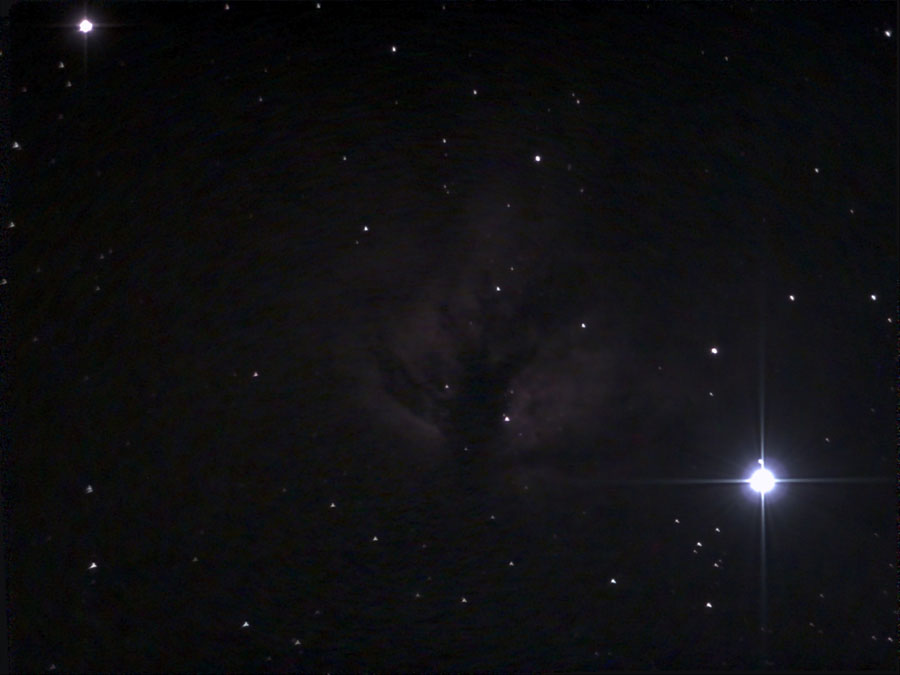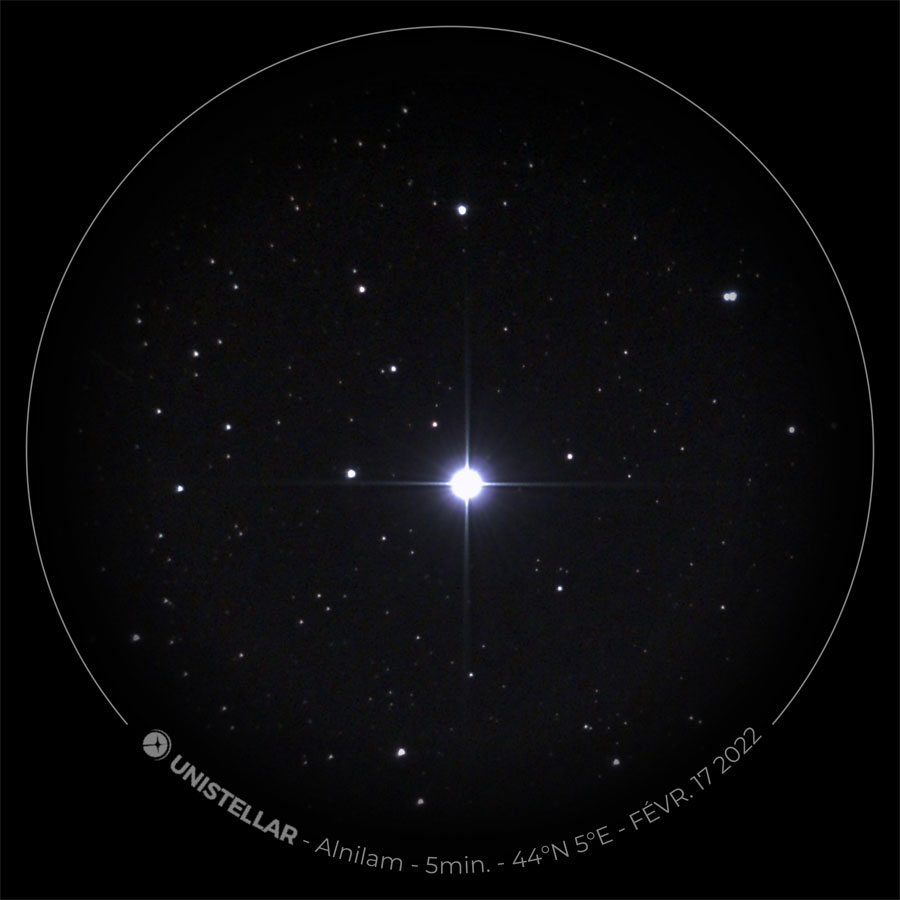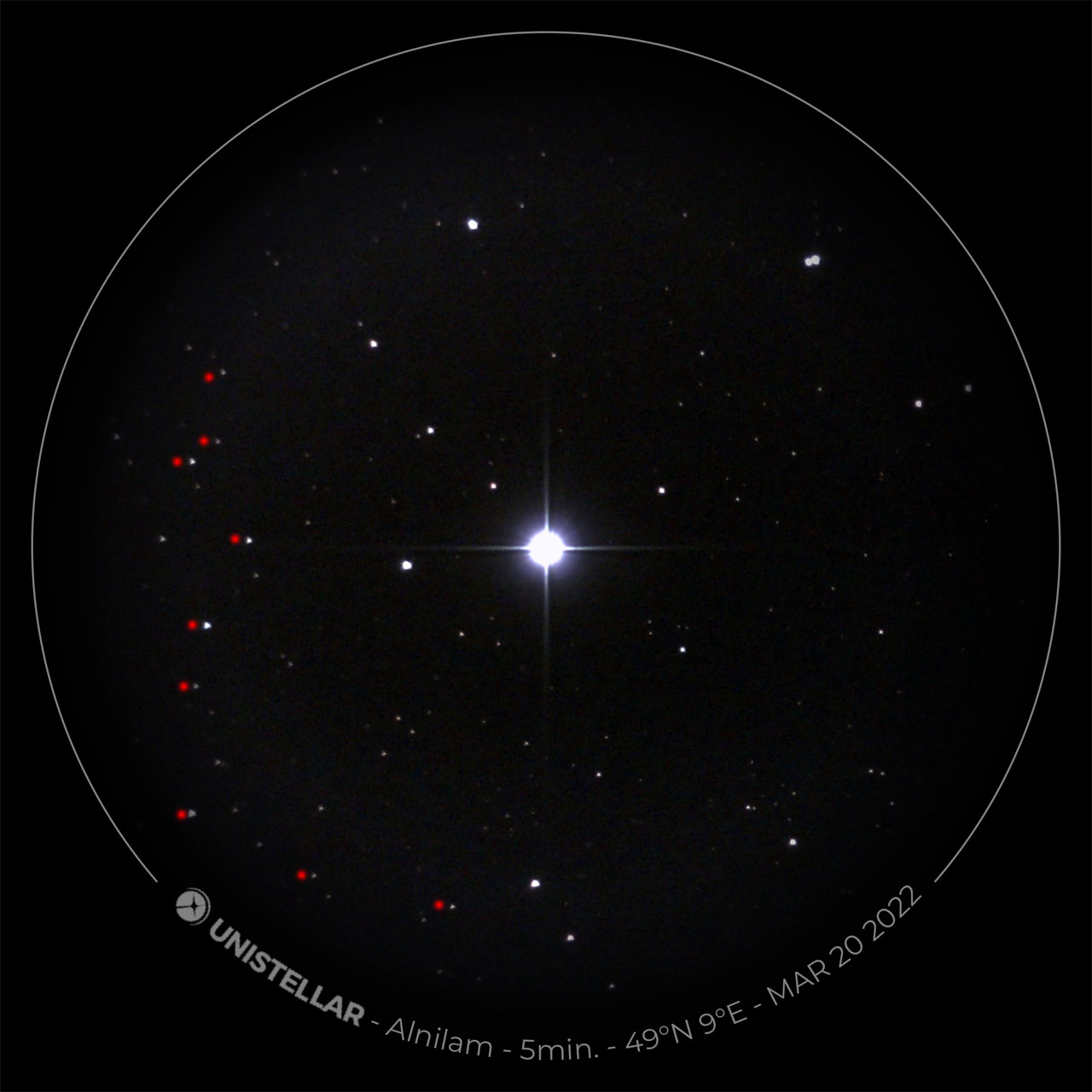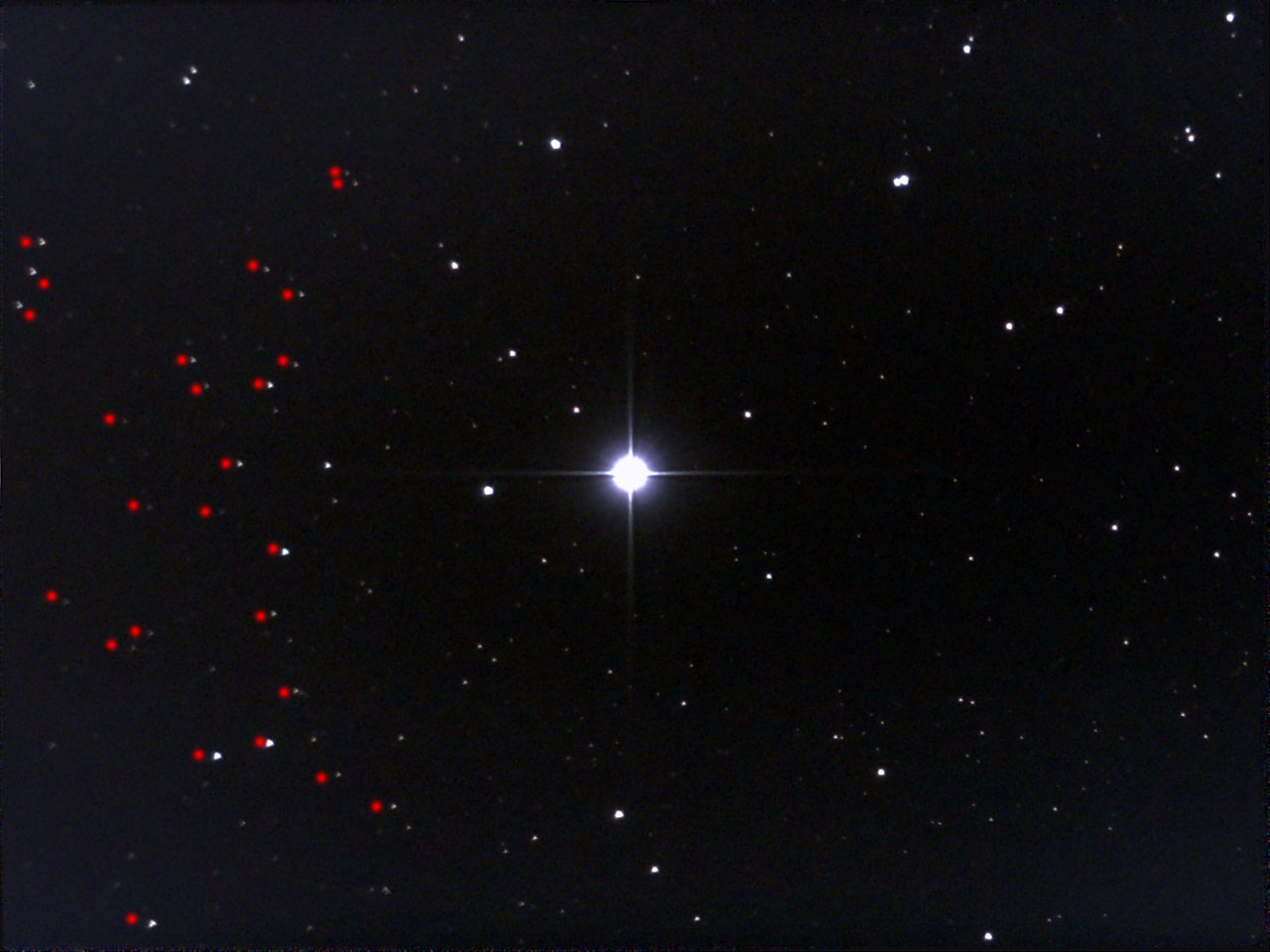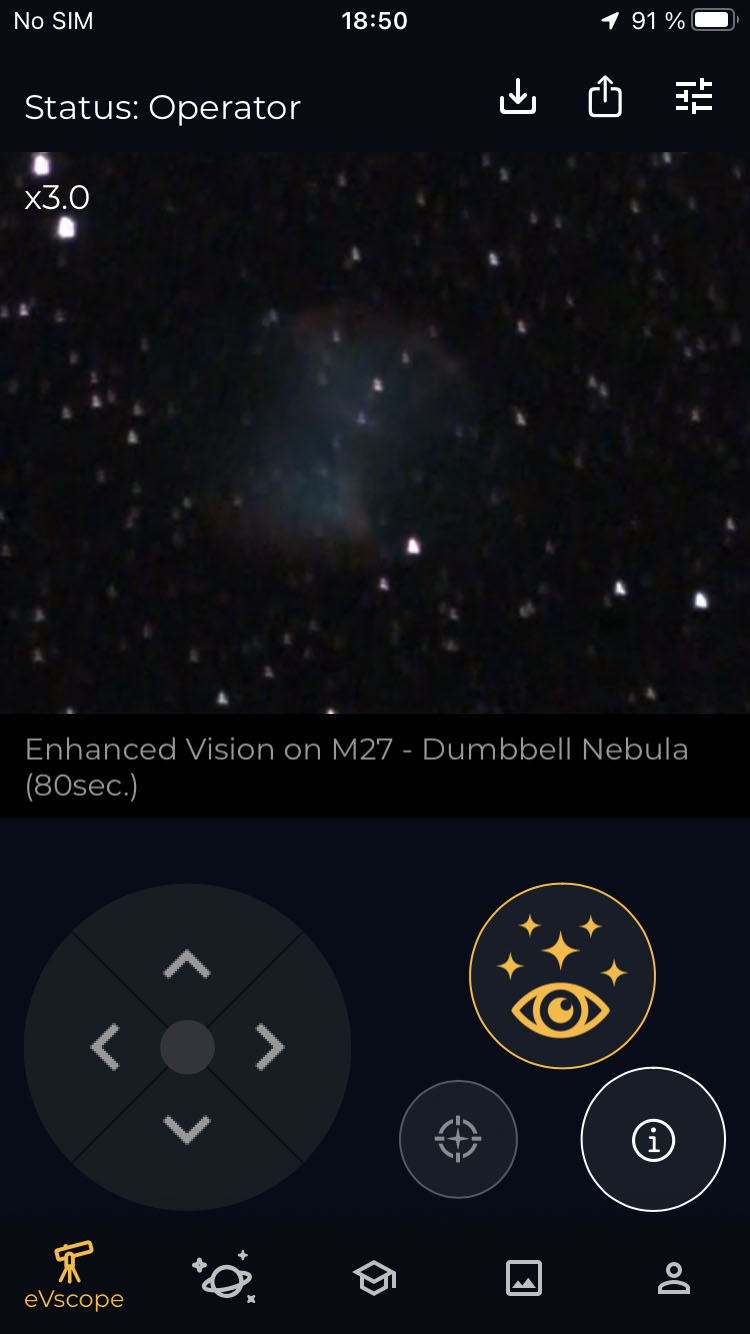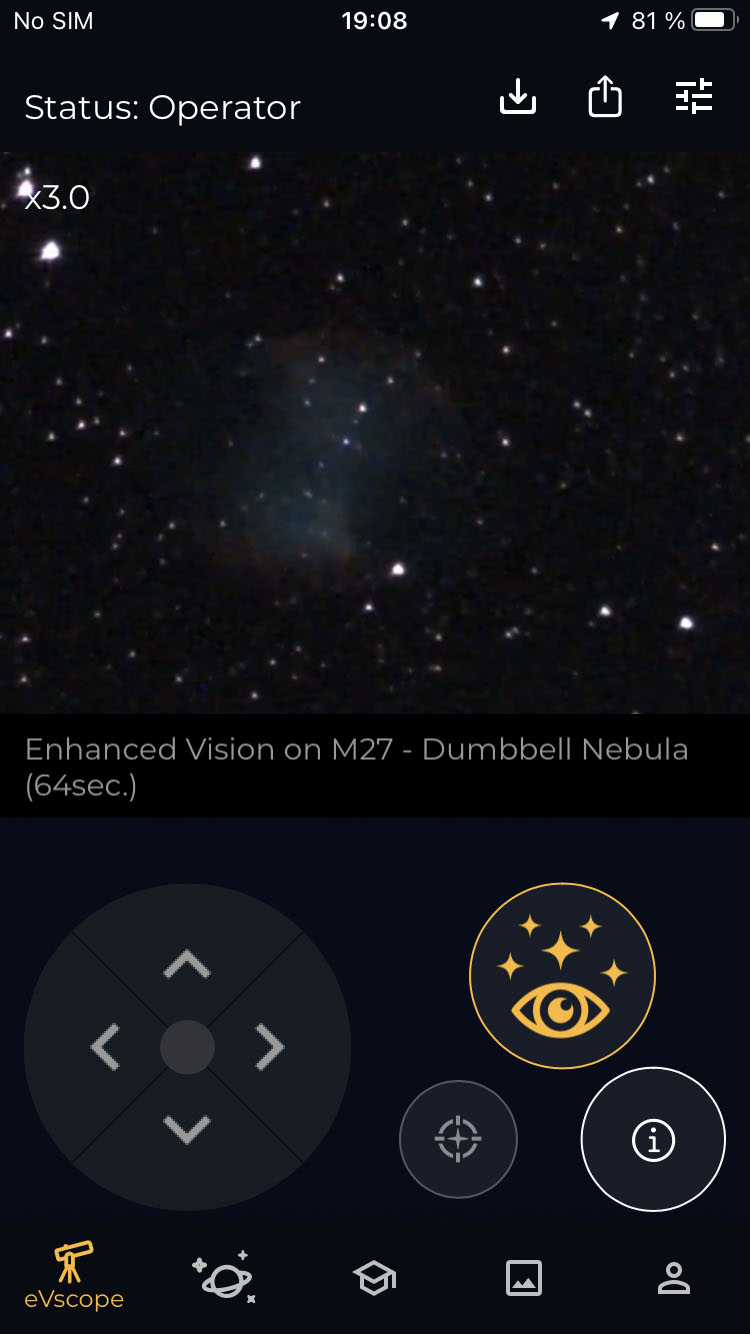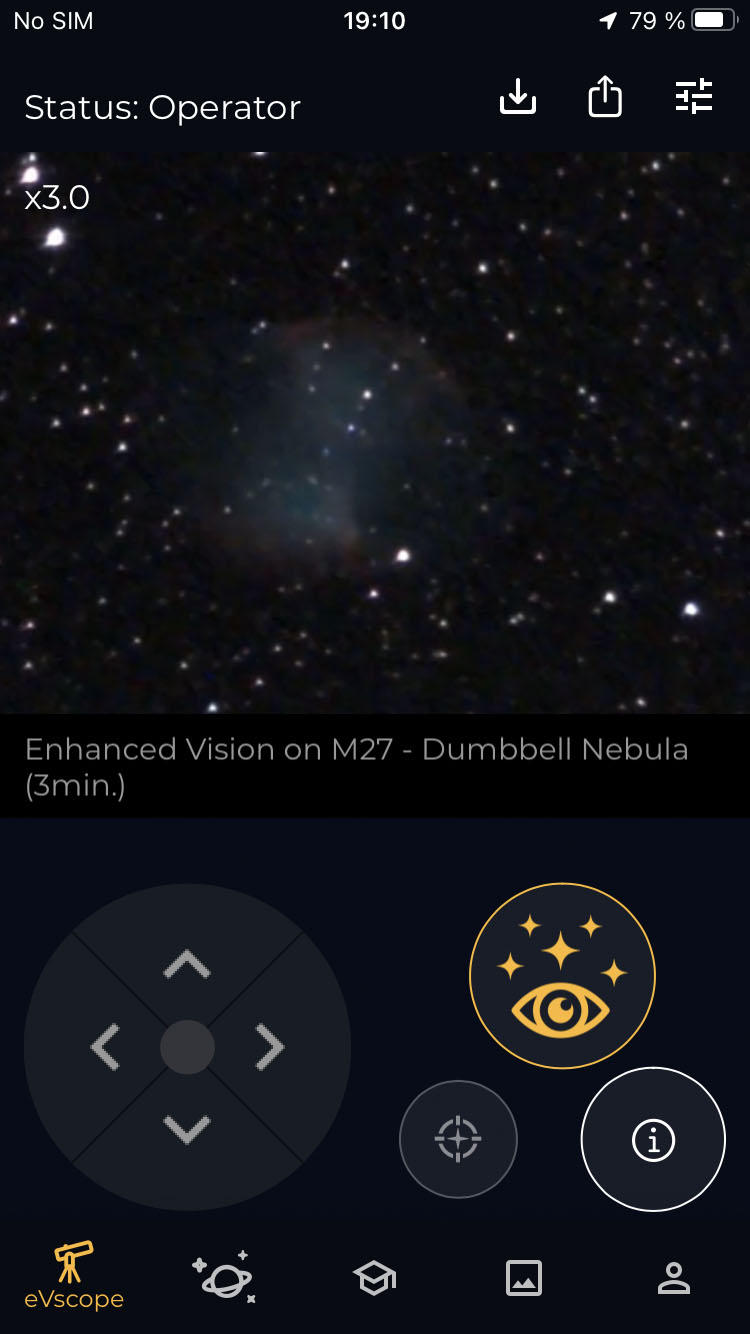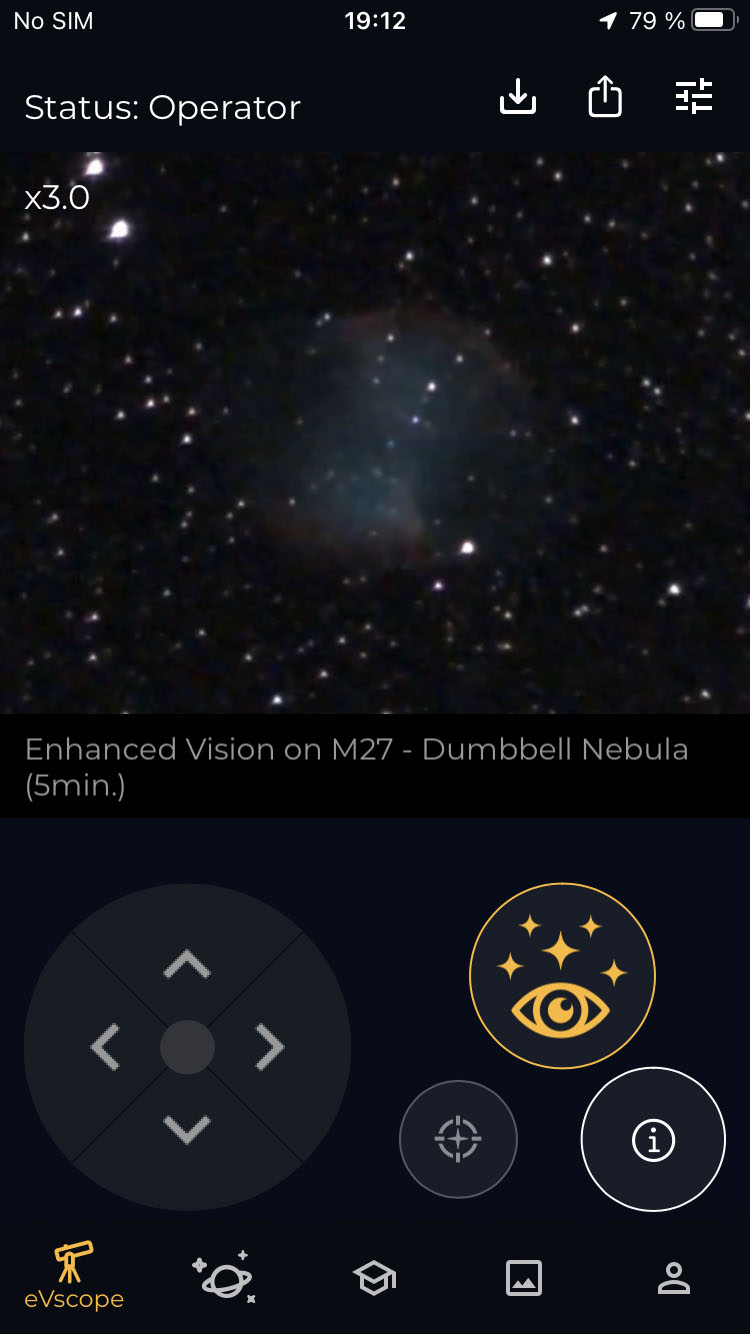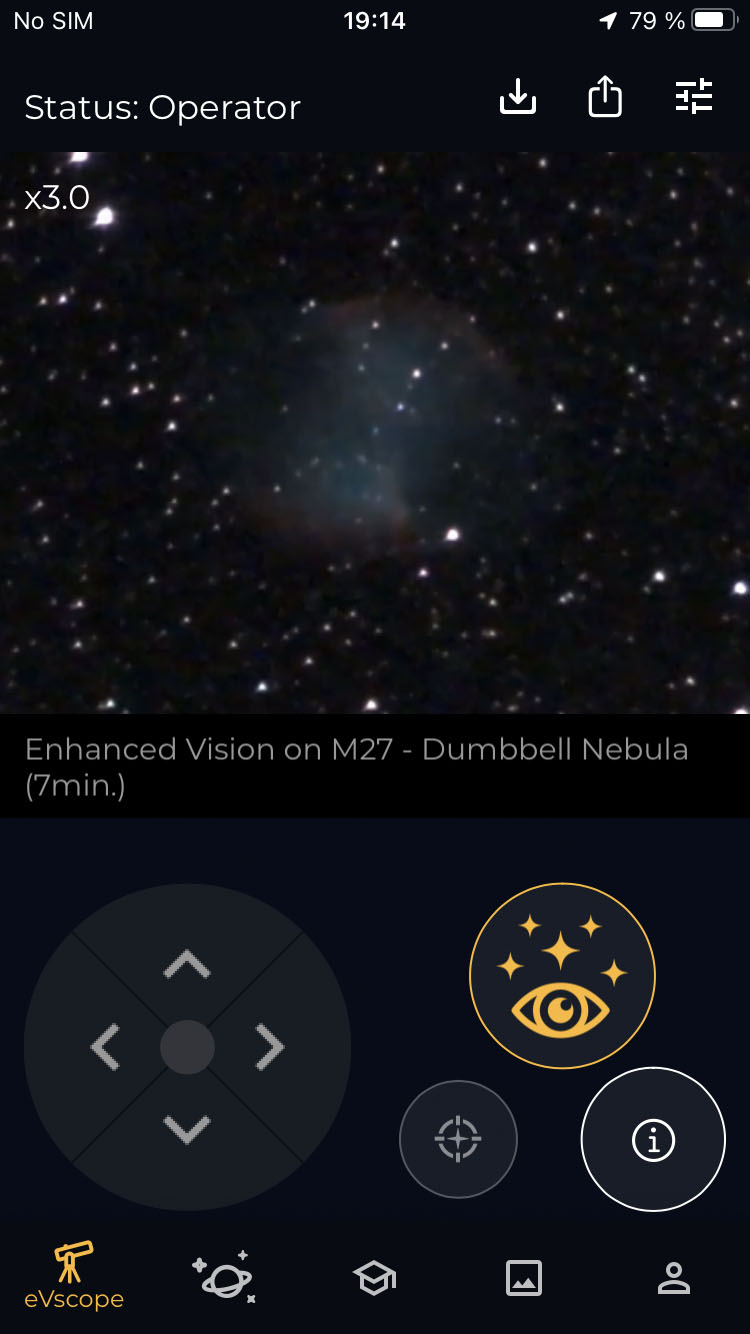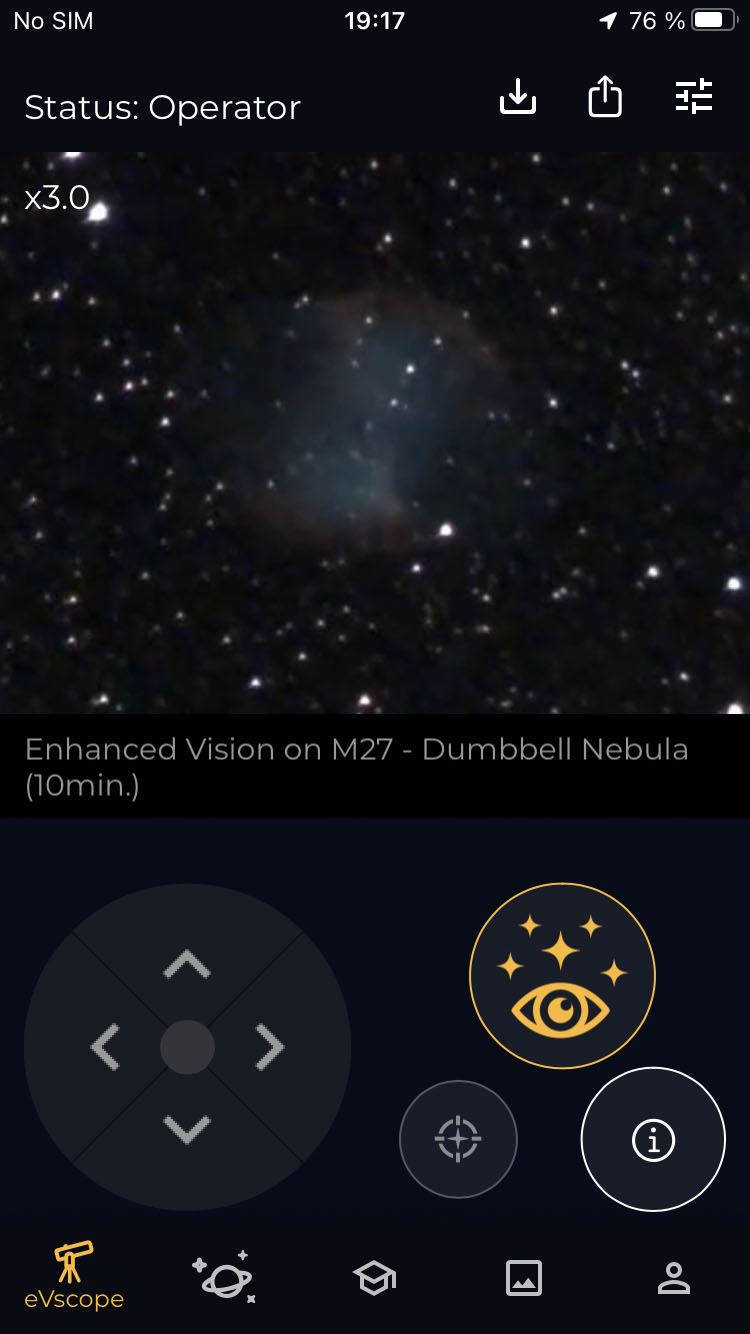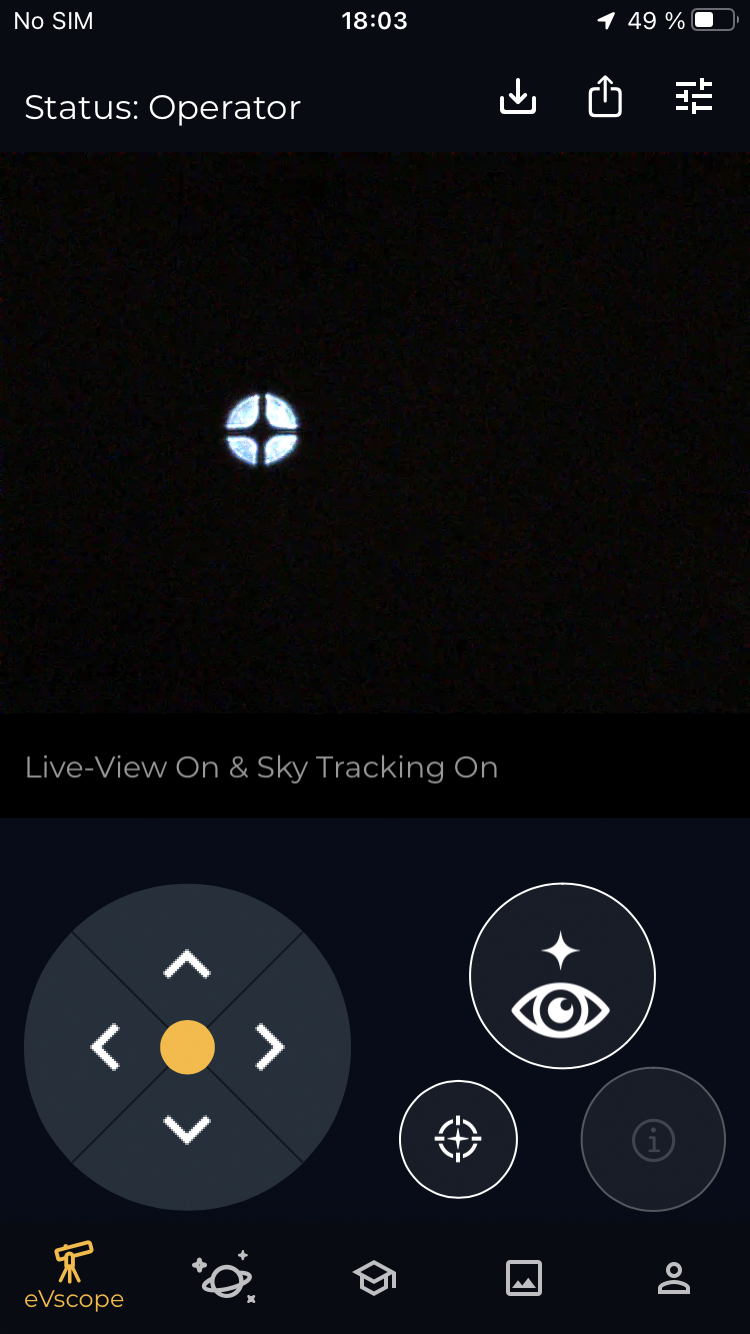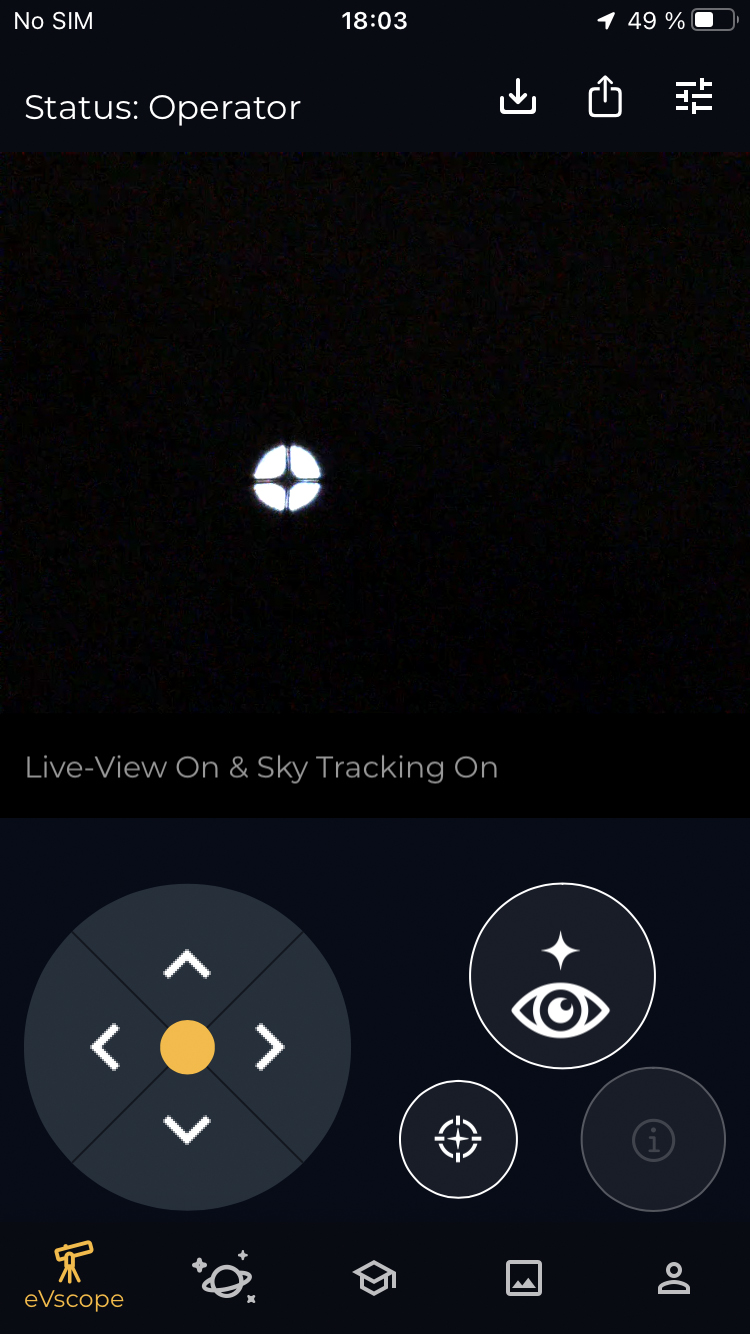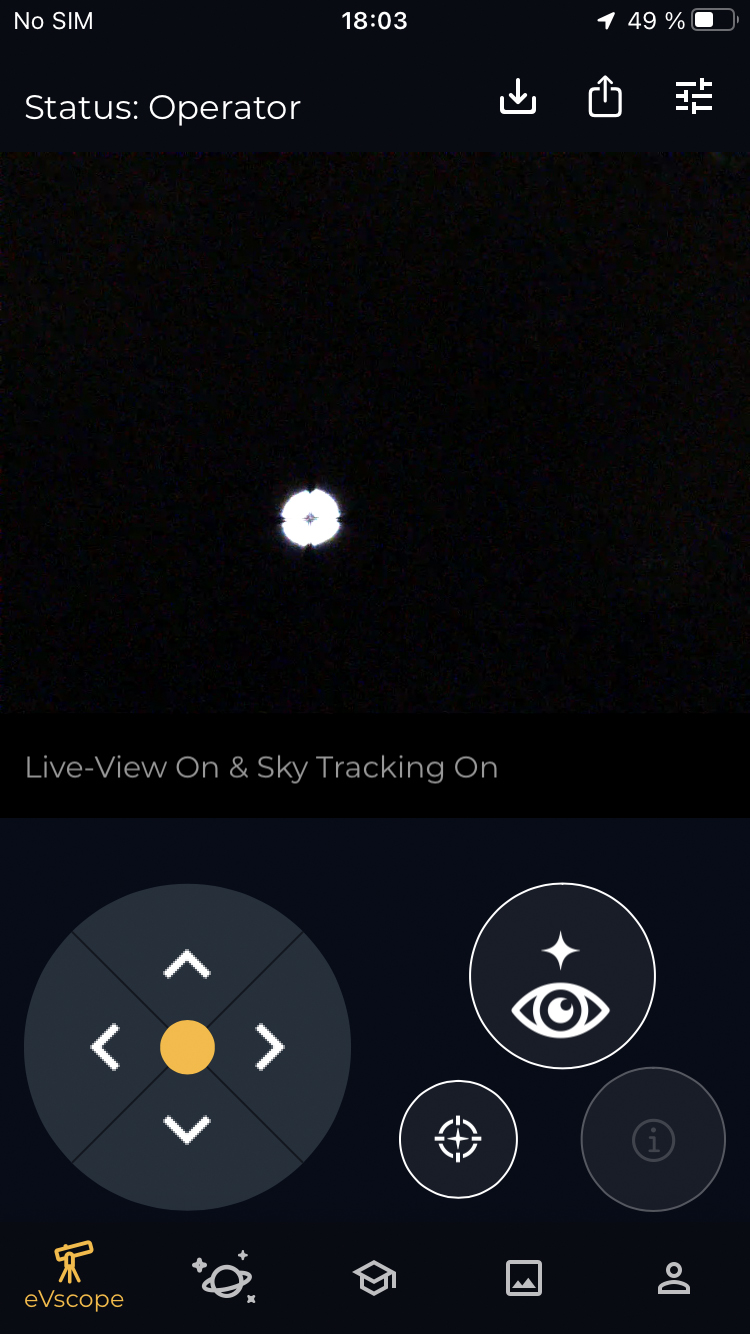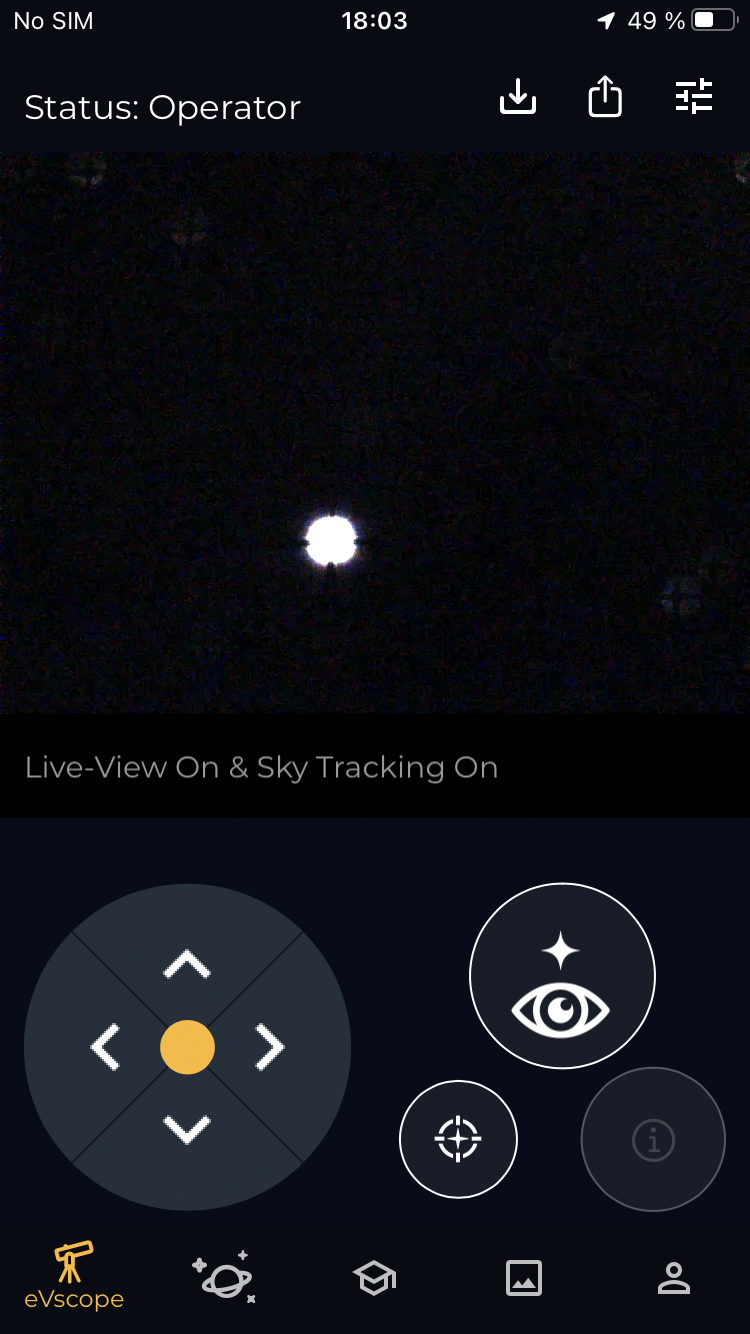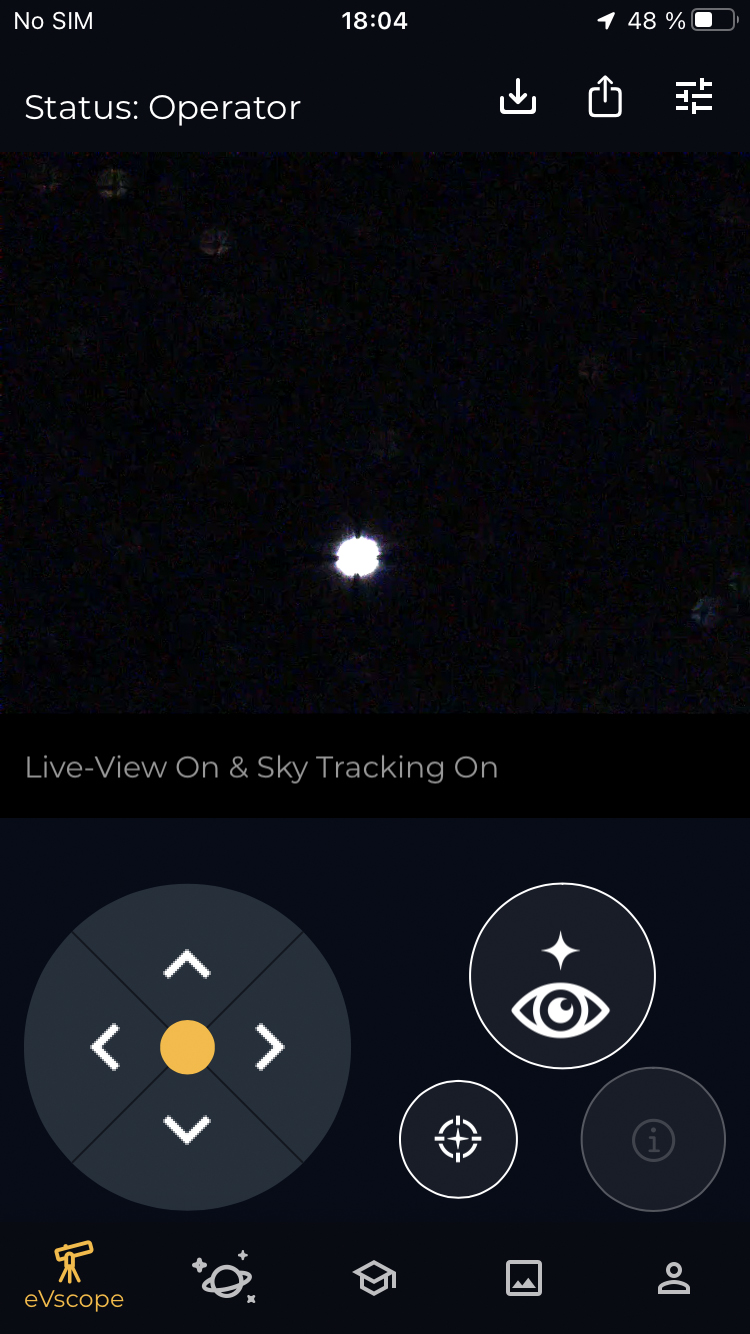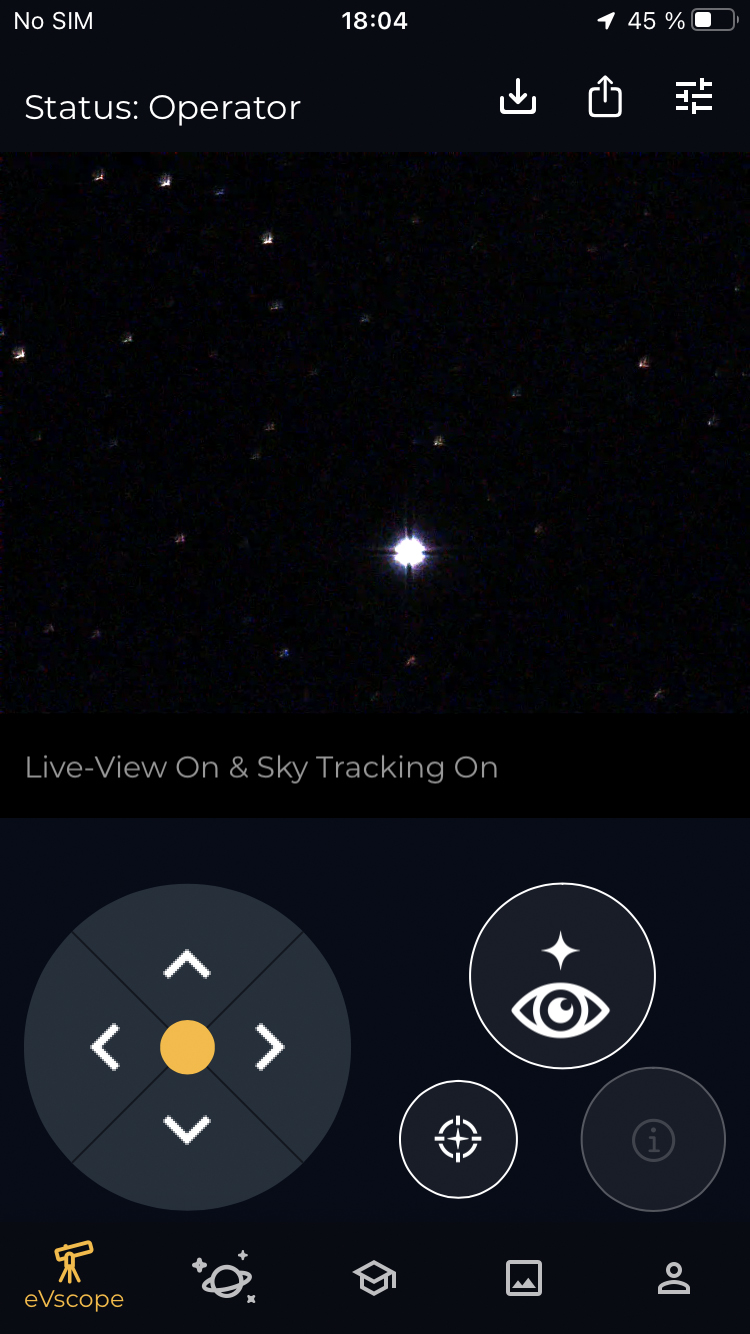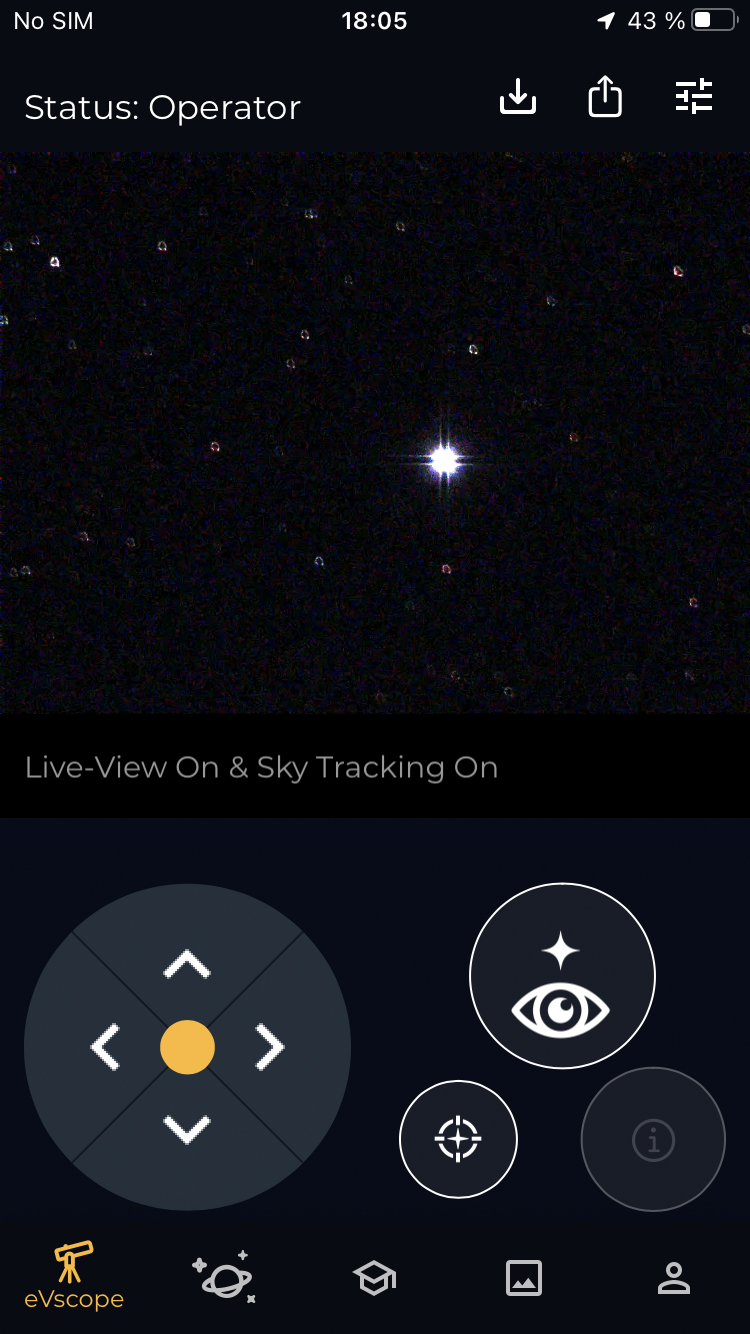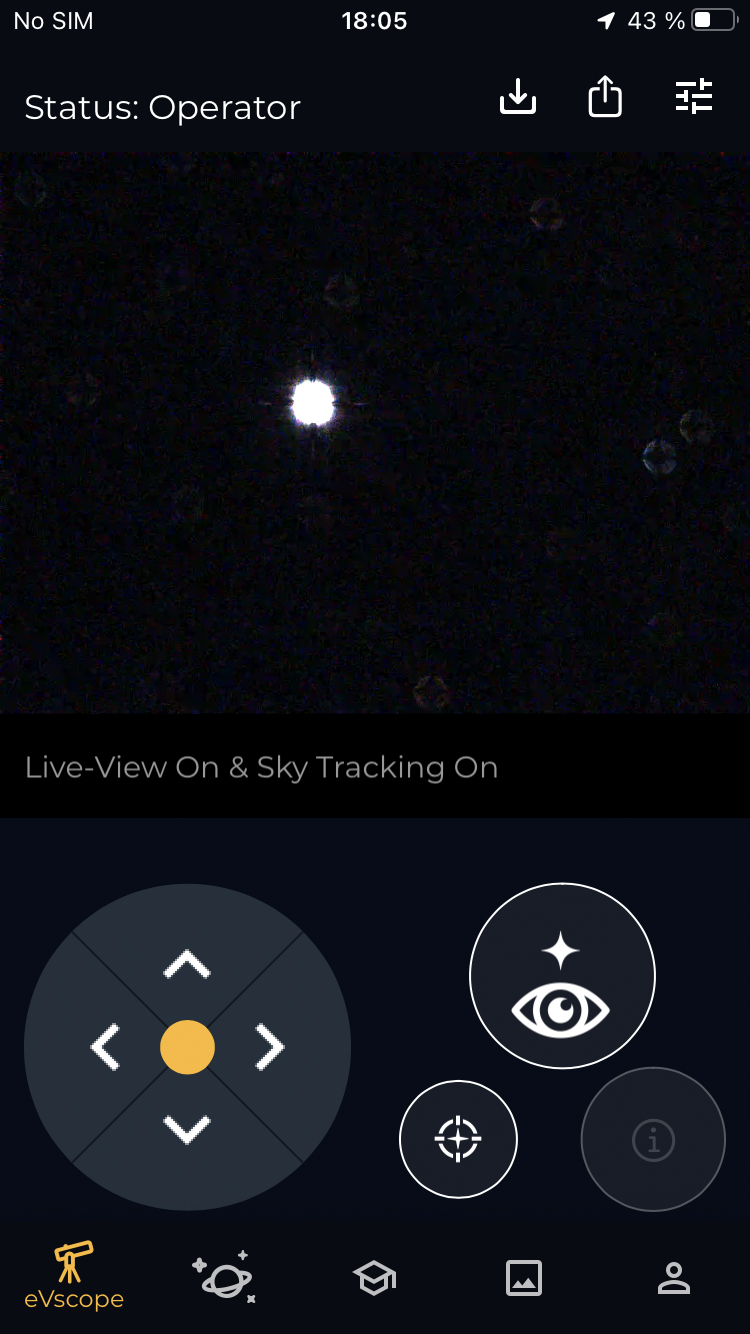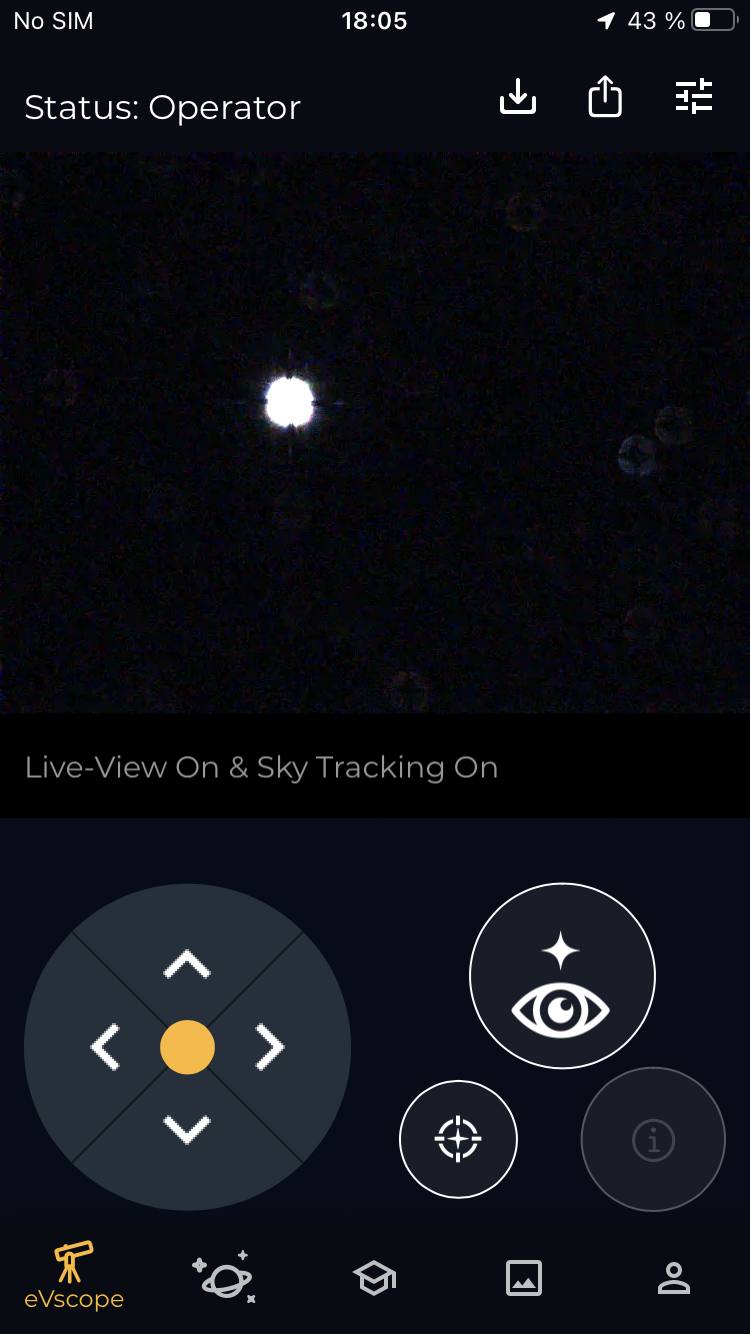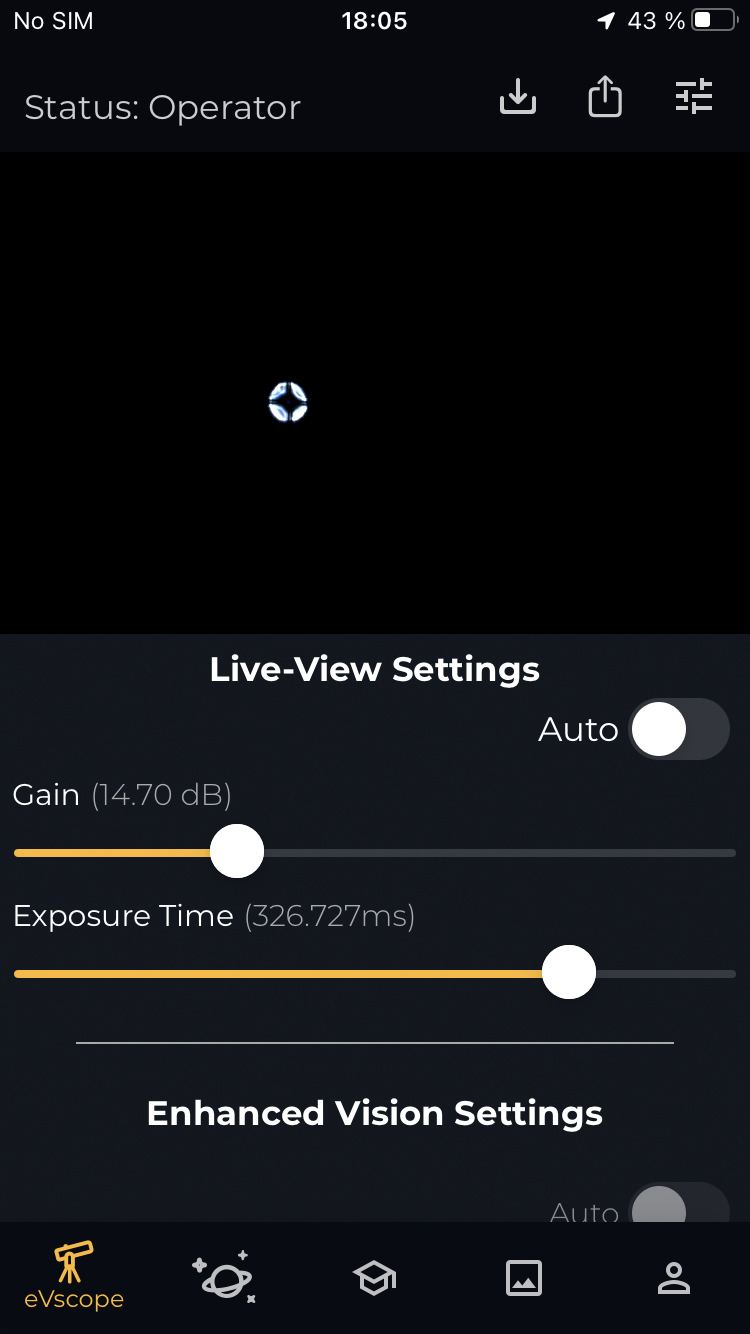Unistellar eVscope 2 - Finding and Judging Problems in eVscope (2) Photos
Introduction | Details | Preliminary Final Words | Links
Archive
On this page, I examine the star shapes on my first sample of the Unistellar eVscope 2, 112 mm/450 mm (f/4)* 4.5" Newtonian electronic telescope, which came with a primary mirror under tension. After the repair at Unistellar, I will see how the stars look then with a slight change in focus. This page should help me and also others to interpret the star shapes with their telescopes.
*) Ordered on November 9, 2021; delivered on December 3, 2021.
Notes:
- See page Overview of the Unistellar Pages for just that!
Note: I received my eVscope 2 at the beginning of December 2021. I bought it, because I was convinced by the better image quality* of the published sample photos and by the slightly larger field of view. I therefore sold my eVscope. *) Since I was not satisfied with the results of my new eVscope 2, Unistellar offered to check and possibly repair my eVscope 2. So, I sent it to Unistellar on February 14, 2022 and received information on February 18 that my eVscope 2 had been repaired and will be returned to me. When asked, I was told that there was a problem with the primary mirror, which was slightly under tension and therefore produced blurry images. As proof of the repair, I received a photo of Alnilam, which looks much better than my similar photo of Alnitak (near the Flame Nebula). It looks much better than my similar photo of Alnitak (near the Flame Nebula), but at closer look still exhibits triangular stars). So please note that my eVscope 2 photos on this page do not reflect the true performance of the eVscope 2! |
Introduction
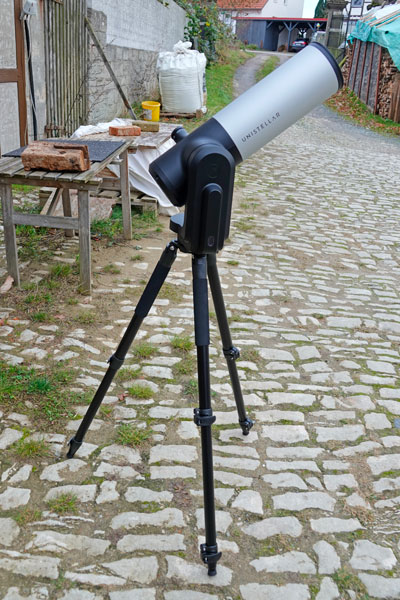 |
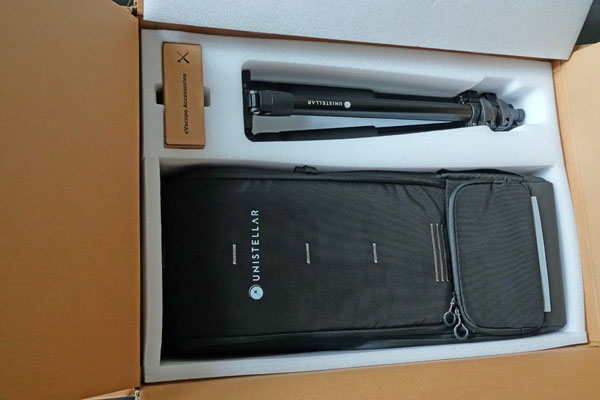 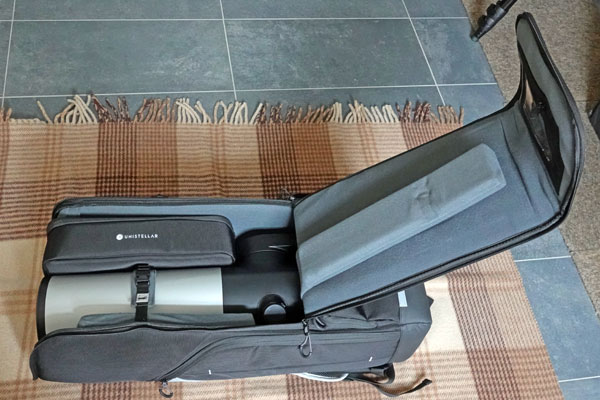 |
 |
Photos: My eVscope 2 (December 3, 2021)
My eVscope 2 arrived on December 3, 2021, and already two days later (Dec 5), I was able to put it into operation for the first time. The first results were disappointing, because the eVscope 2 was decollimated, probably due to the long transport. At least that was what I thought... In fact, however, several errors came together, the most difficult being to determine whether the eVscope 2 was actually decollimated. However, until February 2022, I kept collimating on it, with varying degrees of success; but the differences seem to have been essentially effects of focus.
It turned out that the focus was not always exactly right, so that my first photos, for example, looked "muddy". And this, although I had focused the eVscope 2 before with the Bahtinov mask! In addition, the stars did not look round at all. Depending on the brightness, the star shapes were different and partly even triangular! I found out what this means (primary mirror under tension) only in February 2022 by searching the Internet.
In hindsight, I had to realize that I made a number of mistakes or erroneous assumptions on the first observation evening. Partly, this was perhaps due to the hurry (because of threatening clouds...) and partly to my ignorance. Probably, I started observing too early, so that the telescope was not yet cooled down properly. While the telescope cooled down, apparently the optimal focus point shifted, so that my photos of the Dumbbell Nebula M 27 looked "muddy". The blurring caused some stars otherwise visible in the area of the nebula to appear faint or not at all (which is a typical sign of blurring). The nebula itself also looked "diffuse" and undifferentiated. I had not paid much attention to the star shapes because of their smallness on the screen of my iPhone 7, although I was quite aware that they looked much worse than on my original eVscope. Only on the larger computer screen did I realize that some stars looked like small triangles, and some looked like a triangle of three dots. What that might mean, however, I did not know at that time. Instead, I assumed that my eVscope 2 had been decollimated by transport, and started with collimation attempts that failed due to my lack of knowledge (I had forgotten everything again...) and oncoming clouds. I should have better tried to refocus the eVscope 2, then the initial disappointment would probably have been a little less...
I may have even changed the focus while observing the first object, the globular cluster M 2, but apparently only slightly for the better:
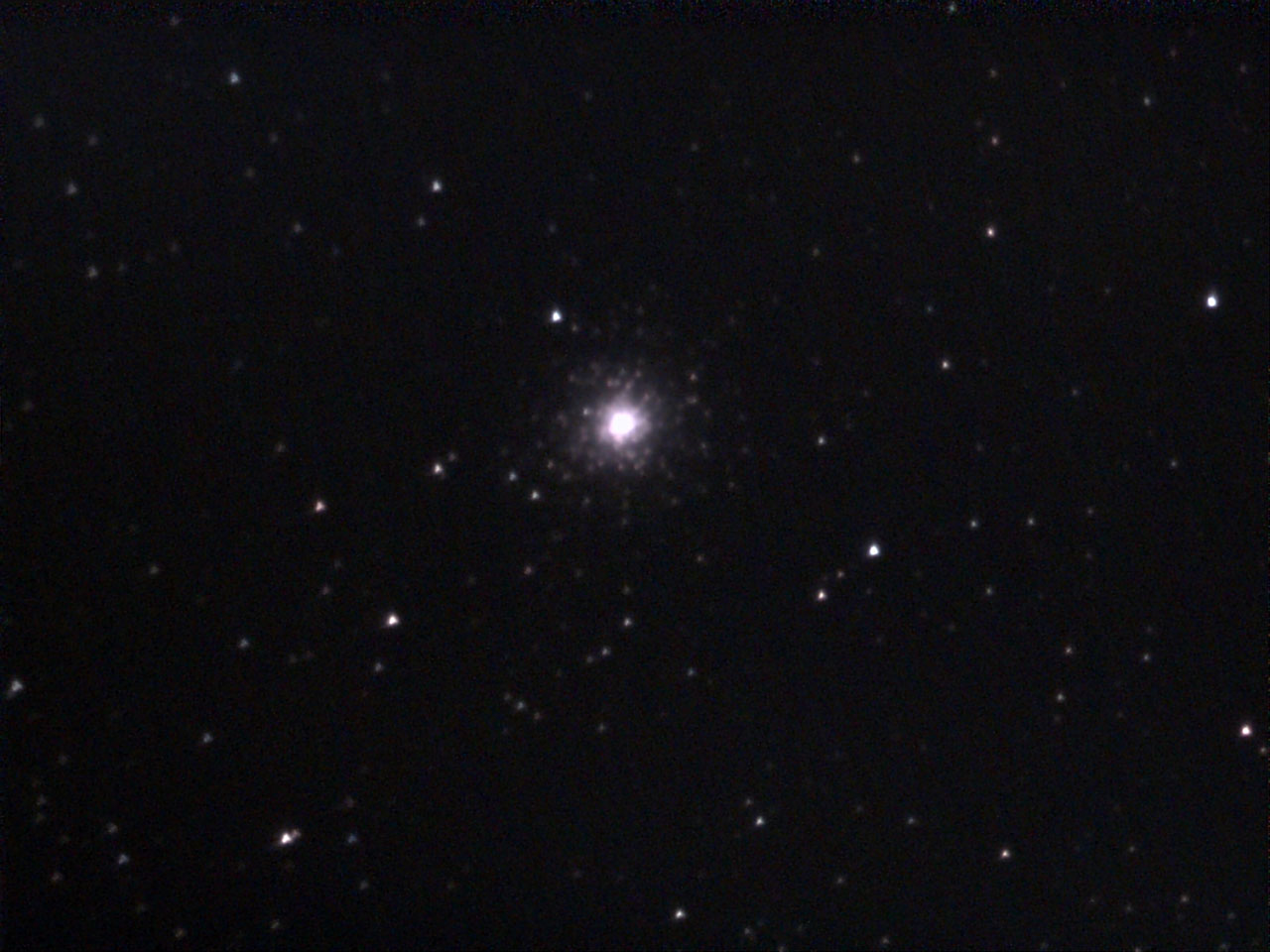 |
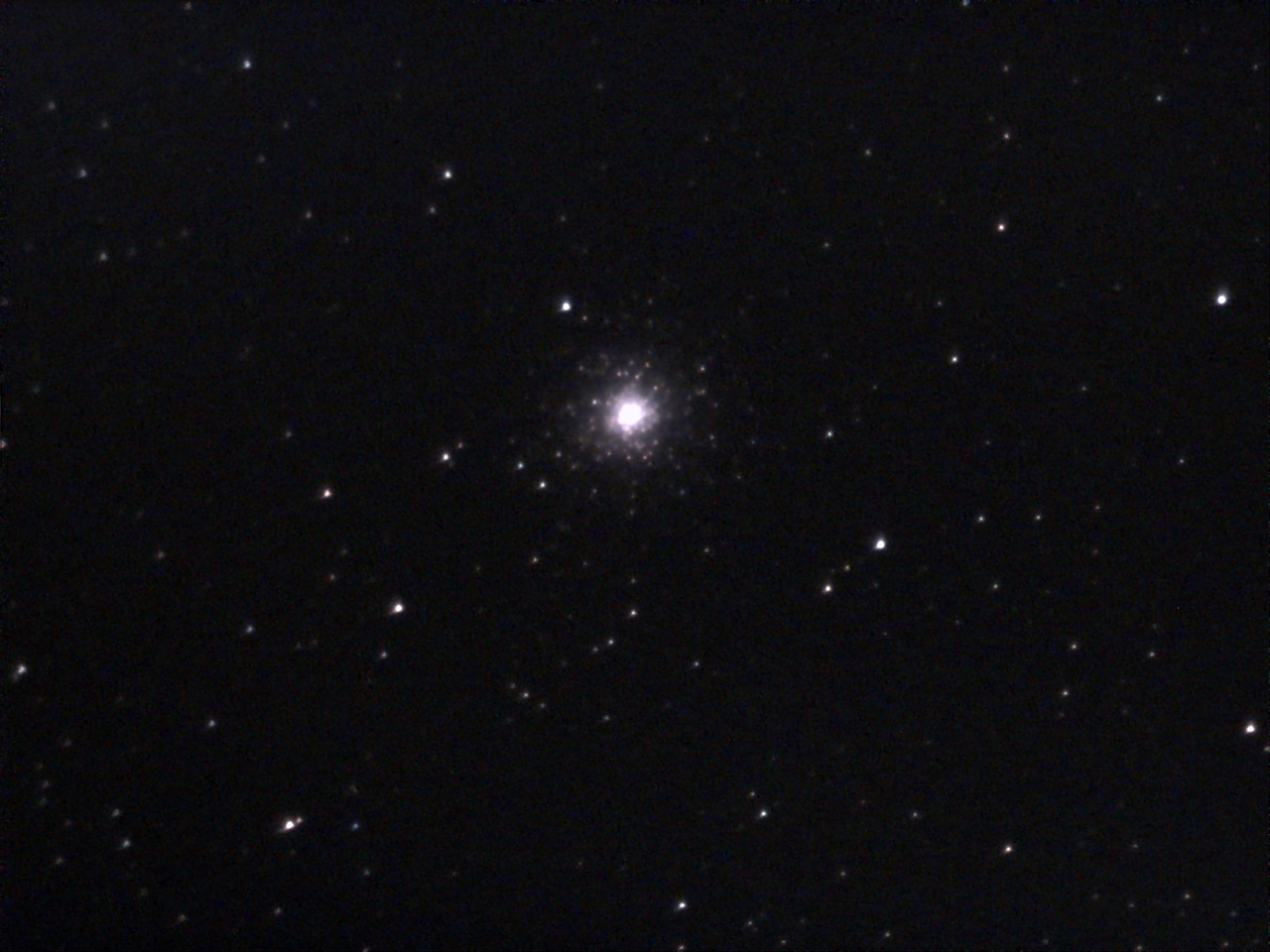 |
|
M 2 - eVscope 2, Dec 5, 2021, unprocessed (original size) |
M 2 - eVscope 2, Dec 5, 2021, unprocessed, after focusing (original size) |
Photos: In the later photo on the right, the stars are a bit smaller, but still have a "tail" (please look at the large versions!), especially below a diagonal running from the upper left to the lower right.
In further observation sessions, I made quite a few collimation attempts, but collimation was difficult for me, because the collimation image (cross) was "dented", and depending on the position on the screen, sometimes the symmetry shifted as well. Overall, I got very different results, but not really good ones. Partly the photos became sharper and in the nebula of M 27 more stars were visible. Also the shape of the triangular stars changed: sometimes they were more "closed" triangles, sometimes more like three points.... This finally led me to take screenshots of stars with different focus settings to get a feel for the change in star shapes. More on that under "details"!
In the end, I was not satisfied with the results from my new eVscope 2, and Unistellar offered to check my eVscope 2 and repair it if necessary. To do this, I sent it to Unistellar on February 14, 2022 and received information on February 18 that my eVscope 2 had been repaired and would be sent back to me. When asked, I was told that it had a problem with the primary mirror, which was a bit under tension, causing it to be out of focus. So that means that my "main problem" was a mirror under tension! And finally, all other measures, such as collimating and focusing only effect something after the "basic problem" (the tense mirror) has been eliminated. After "relaxing" the mirror, Unistellar re-collimated and refocused my eVscope 2, and with this adjustment they took a demo photo that has already been sent to me. It looks much better than my similar photo of Alnitak (at the Flame Nebula), but at closer look still exhibits triangular stars):
For more information, see Preliminary Conclusions!
So now you might think that all my photo examples do not mean anything because they were taken with a mirror under tension. But maybe other owners have similar problems, i.e. maybe also a main mirror under tension, so that my descriptions can help one or the other to judge their photos.
Details
In the following, I would like to discuss some of the listed aspects in more detail and, as far as possible, also illustrate them with photos.
Sufficient Cooling Down Time
Unistellar points out that the eVscope (2) should be taken outside to cool down for about fifteen minutes before observation (remove the lid!). As long as the air forms streaks, the image results will look blurry, especially if you stay longer in EV mode.
I do not know for sure whether the sharpness changes afterwards if you adjust it while it is not cooled down (this certainly depends on the external conditions), but this seems to have been the case for me (it was quite cold). Especially on my first evening with the eVscope 2, I got quite blurry photos despite focusing with the Bahtinov mask at the beginning of the observations. And after readjusting the focus, the results did not get much better (see photos above).
Photos: Collimation patterns that are constantly moving ("bubbling") indicate insufficient cooling!
Triangular Stars and their Cause (Primary Mirror under Tension)
Already on my first photos with the eVscope 2 you can see triangular stars. Partly these are "filled" triangles, partly they seem to consist of three points or look like an angle. Depending on the brightness of the stars this is more or less visible. Brighter stars do not form triangles, but show deformed circles with or without spikes. Image examples see below!
However, it took me a long time to find out the reason for the triangular stars, namely until after I learned from Unistellar the cause for my disappointing photos: the primary mirror was strained. When I then searched the Internet for "strained primary mirror," I found several forum discussions stating that this can cause triangular star shapes. A search for "triangular stars" confirmed this..
Interplay of Collimation, Sharpness and Mirror Tension
When I looked at my first eVscope 2 photos, I first thought only about "poor collimation" and not about sharpness, because I had used the Bahtinov mask (I had not even thought about a mirror under tension...). If you collimate, however, you have the problem that after each collimation you also have to readjust the sharpness. So if the photos look better or worse afterwards, it is not necessarily evident whether this is due to the collimation or the focusing. It may even be that one gets better and the other gets worse....
In my case, the image results were additionally negatively affected by a mirror distortion that I did not recognize at first. What I initially interpreted as the result of poor collimation was probably more the result of mirror tension. In any case, for me as a layman, the influences of all three factors cannot be easily distinguished from each other. Nevertheless, I would like to try a little!
At least, I can see the influence of the focus on the photos by the fact that the "triangles" are smaller and closed when the focus is good, whereas they become larger when the focus is poor and sometimes they appear as angles or three points. If you blur the image even more, small circles appear that contain a collimation cross. The "stars of three dots" are also the result of the collimation cross (spider), but in a distorted form.
The following photos are intended to show the interplay between collimation and sharpness (view the large versions!): (1) eVscope for comparison, (2) eVscope 2 in "as-delivered" condition (Dec. 5, 2021), (3) "aggravated" eVscope 2 after first collimation attempts (Dec. 10, 2021), (4) somewhat improved condition of eVscope 2 (Dec. 10, 2021).
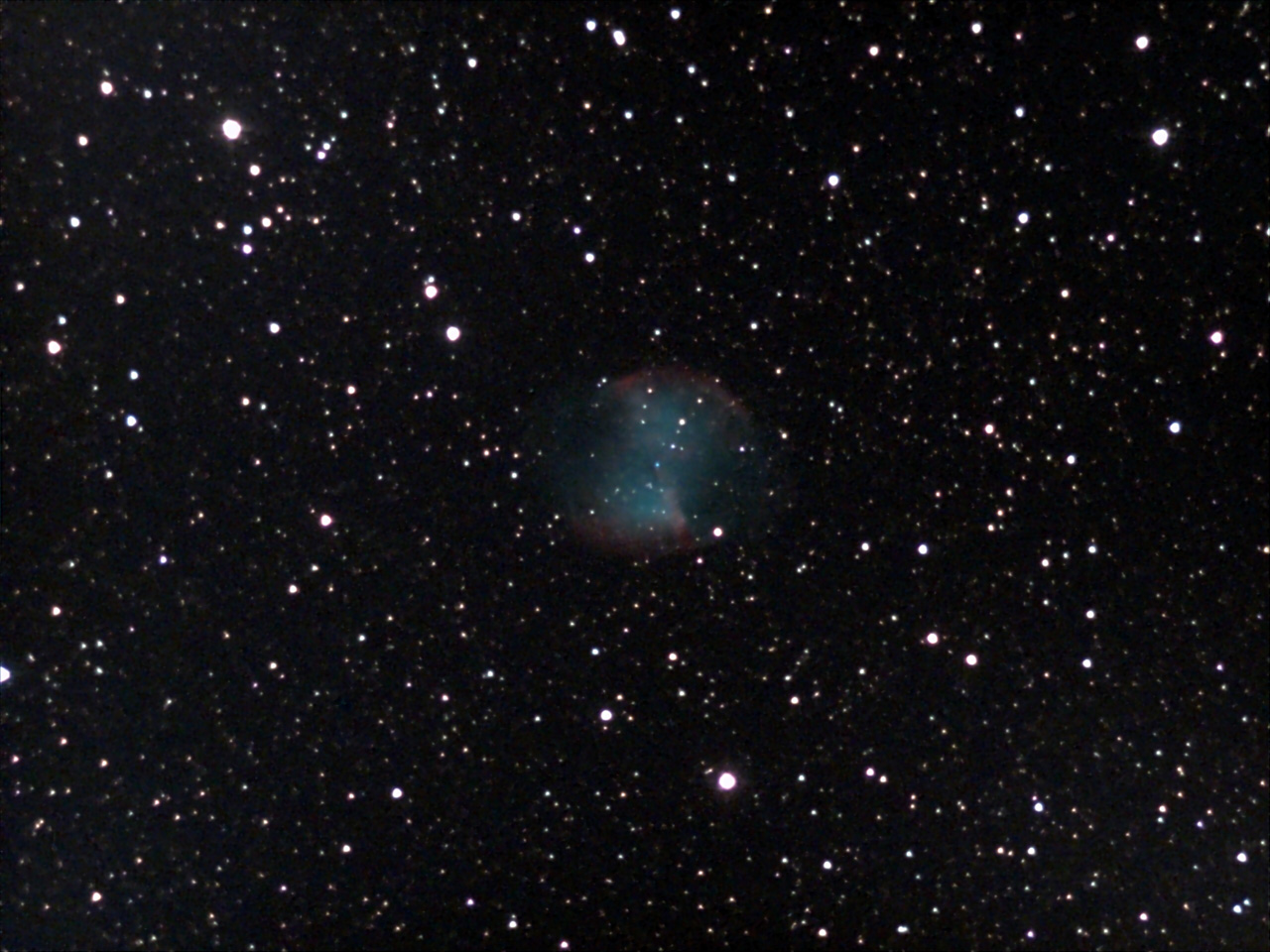 |
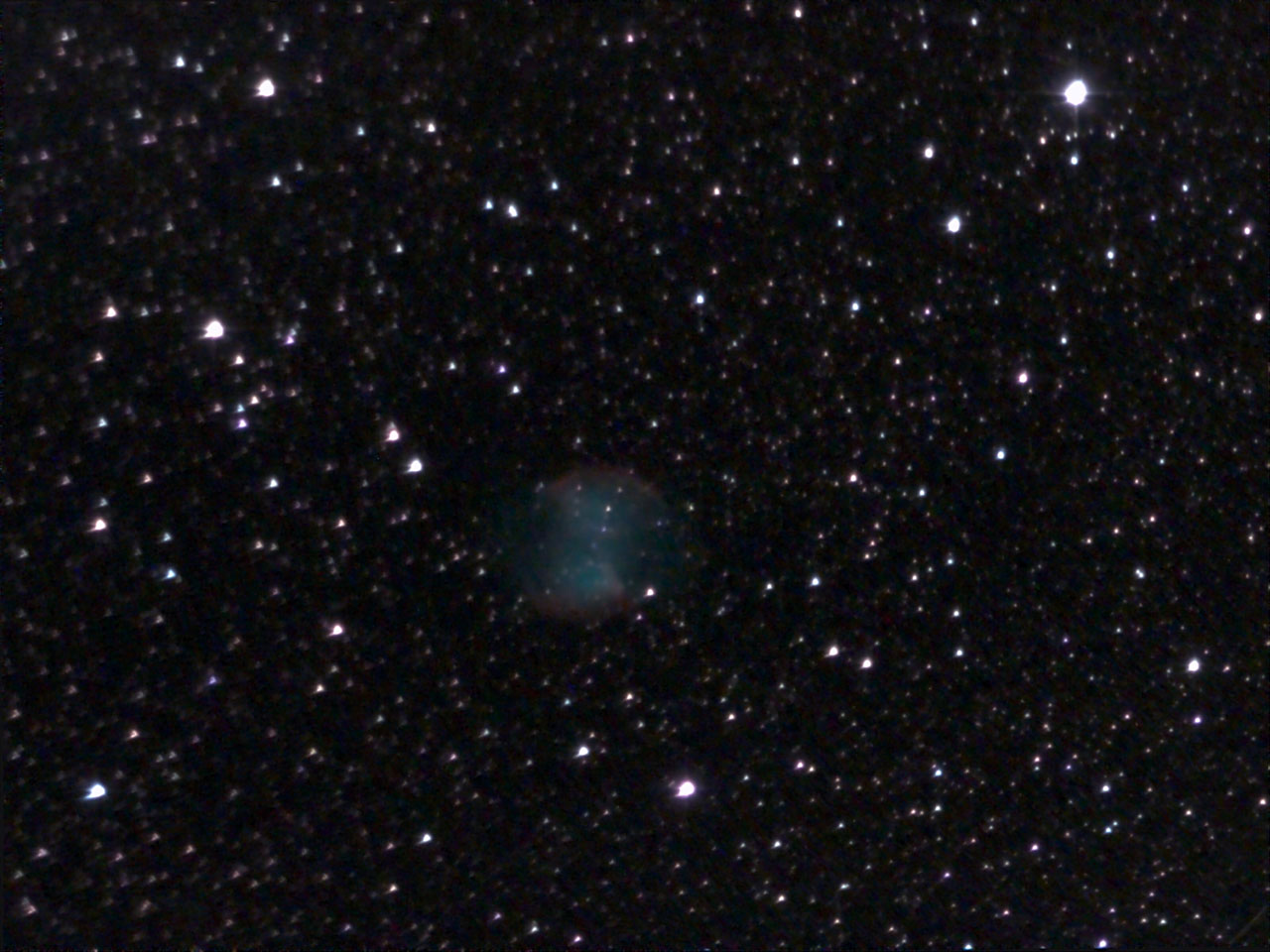 |
|
(1) M 27 - eVscope, Oct 19, 2021, unprocessed (original size), for comparison |
(2) M 27 - eVscope 2, Dec 5, 2021, unprocessed (original size), for comparison |
|
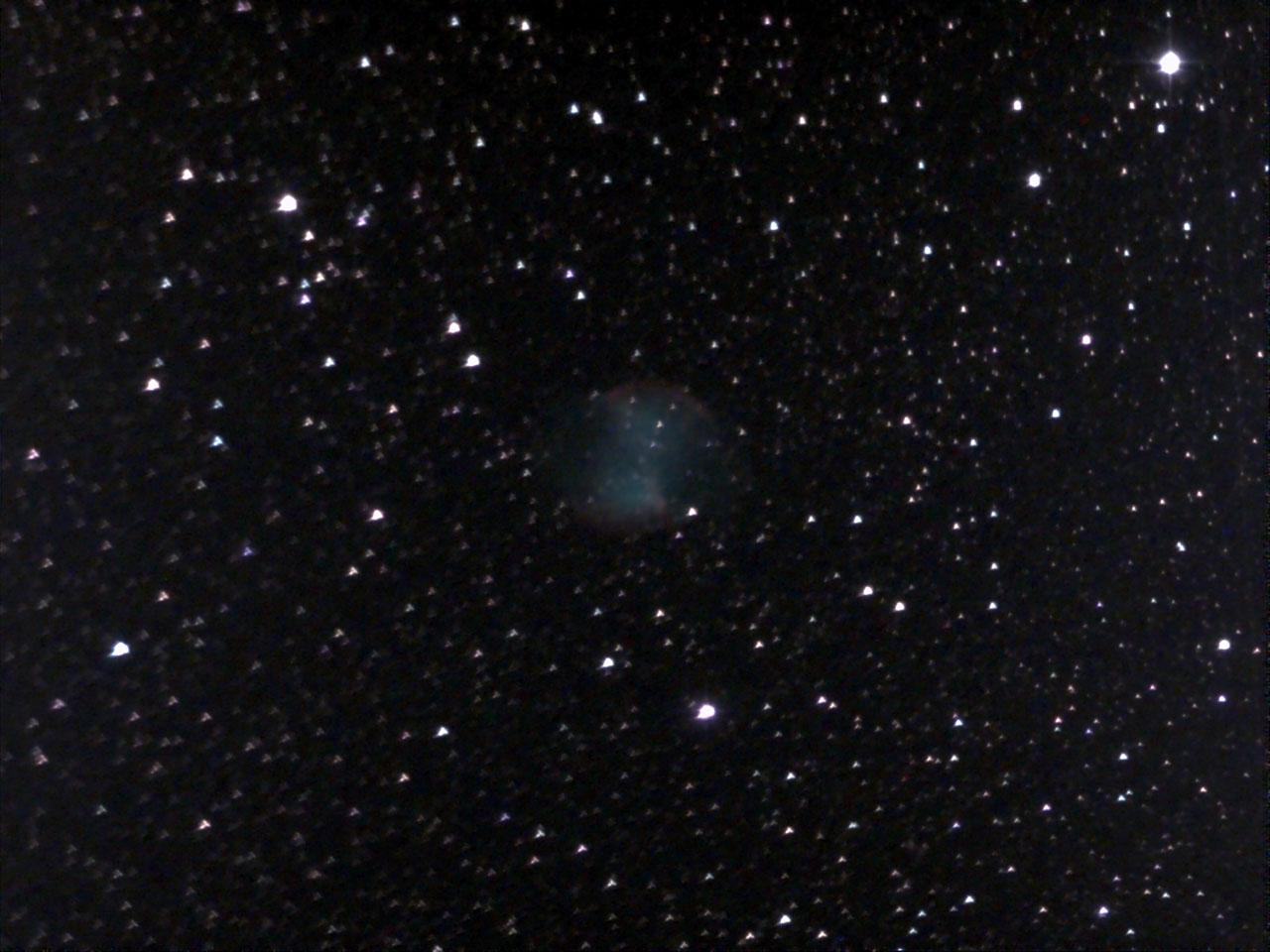 |
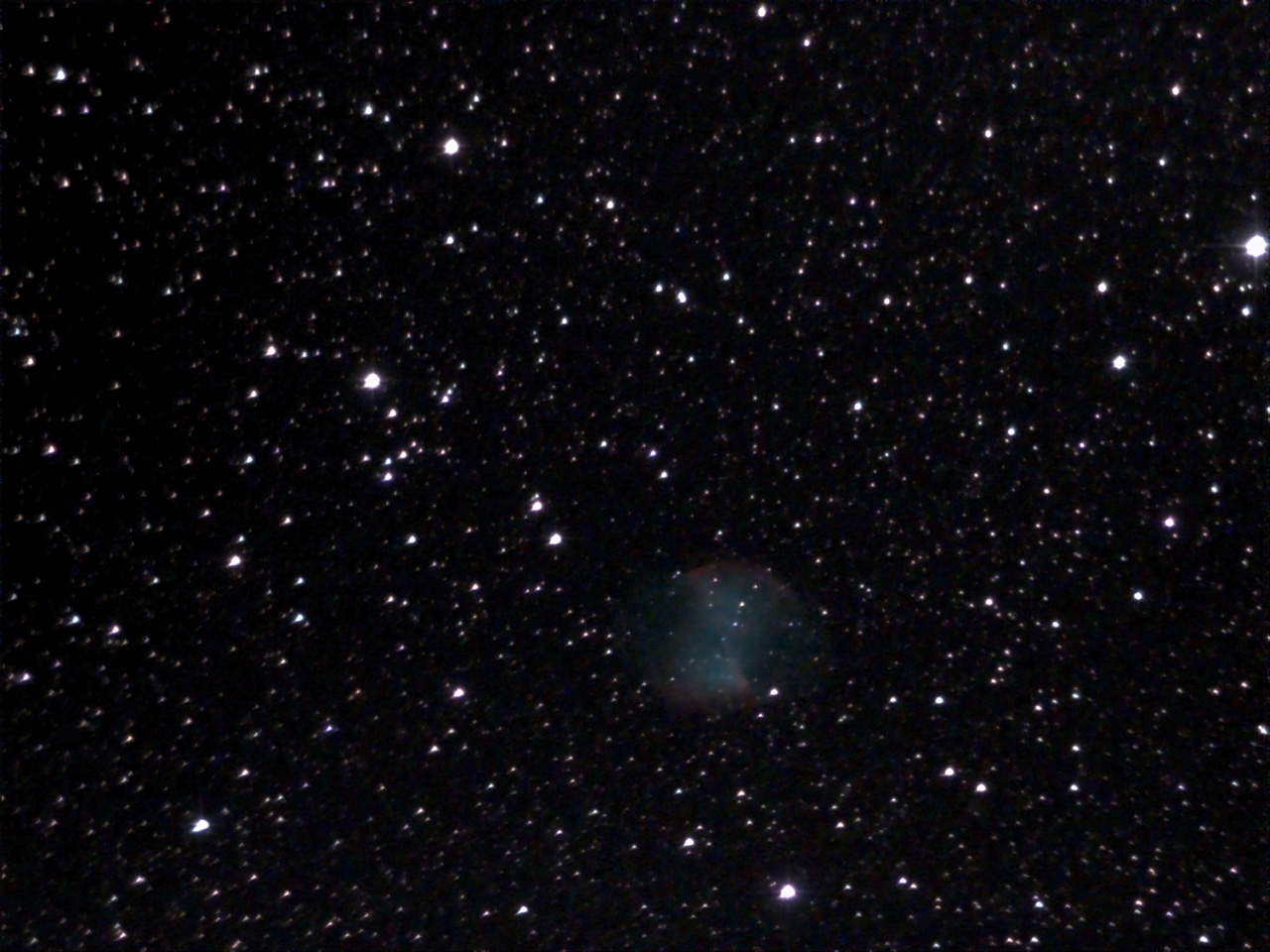 |
|
(3) M 27 - eVscope 2, Dec 10, 2021, unprocessed (original size), after collimation attempts |
(4) M 27 - eVscope 2, Dec 10, 2021, unprocessed (original size), after collimation attempts |
Here again are detail enlargements:
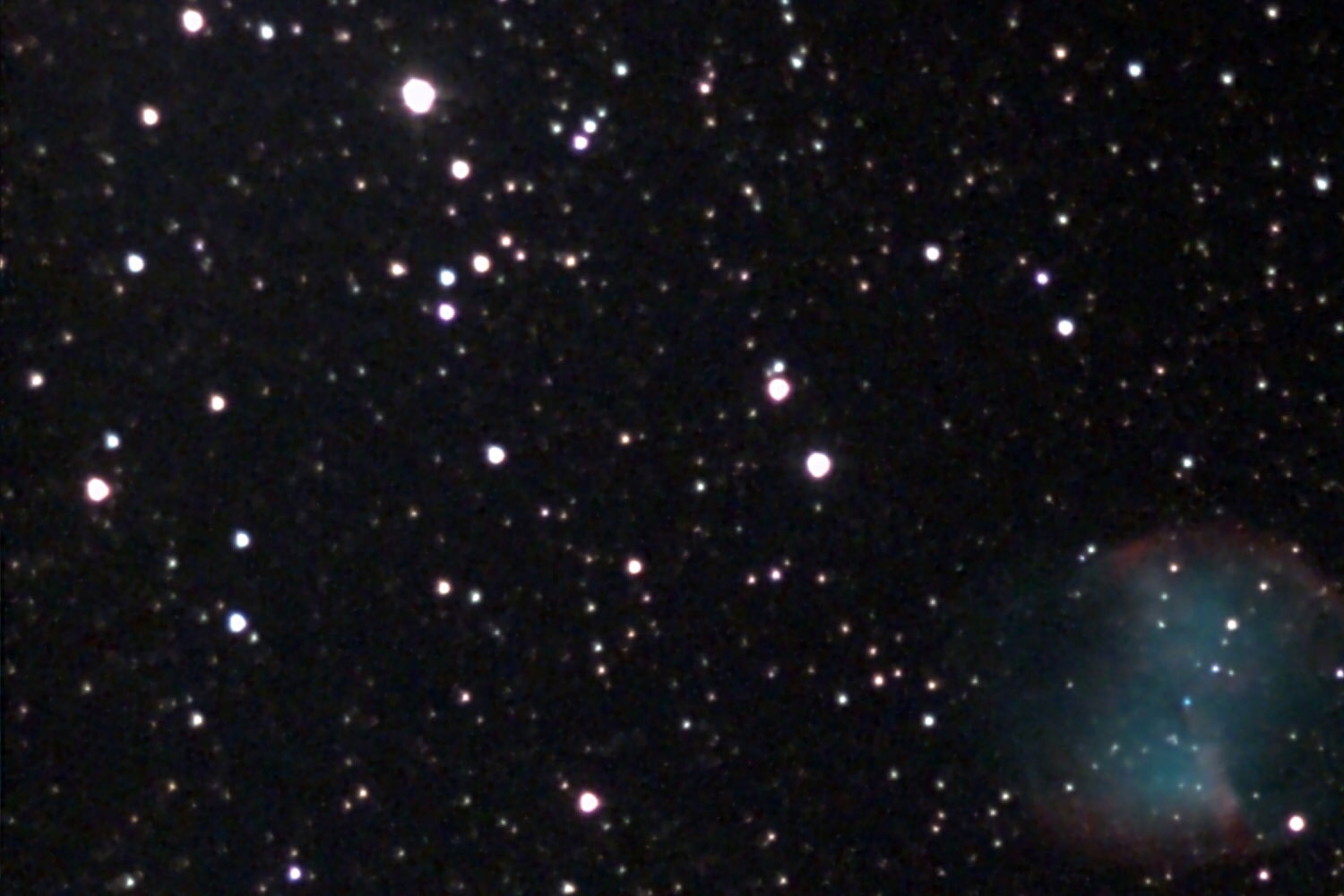 |
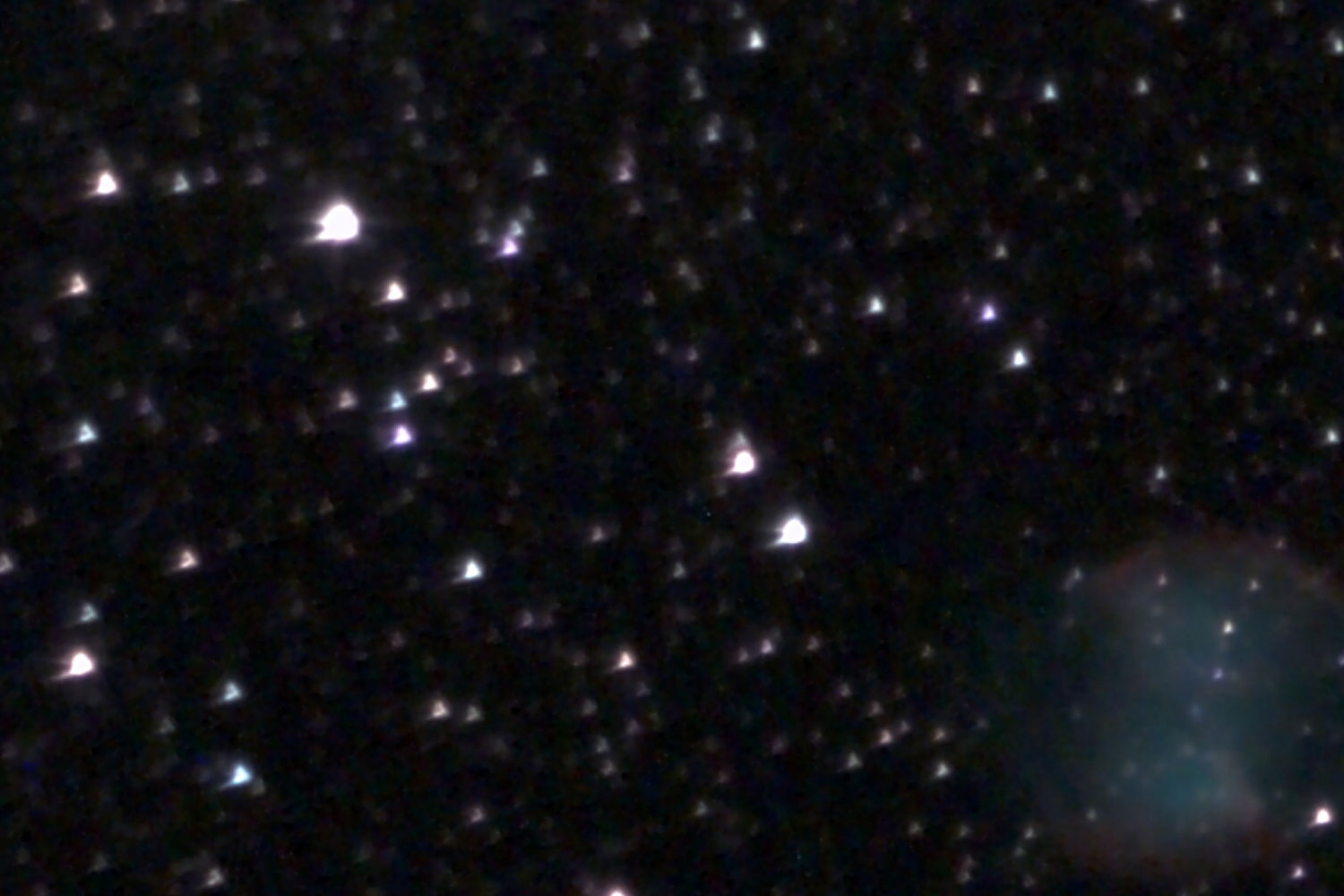 |
|
(1) M 27 - eVscope, Oct 19, 2021, unprocessed (original size), for comparison, section |
(2) M 27 - eVscope 2, Dec 5, 2021, unprocessed (original size), for comparison, section |
|
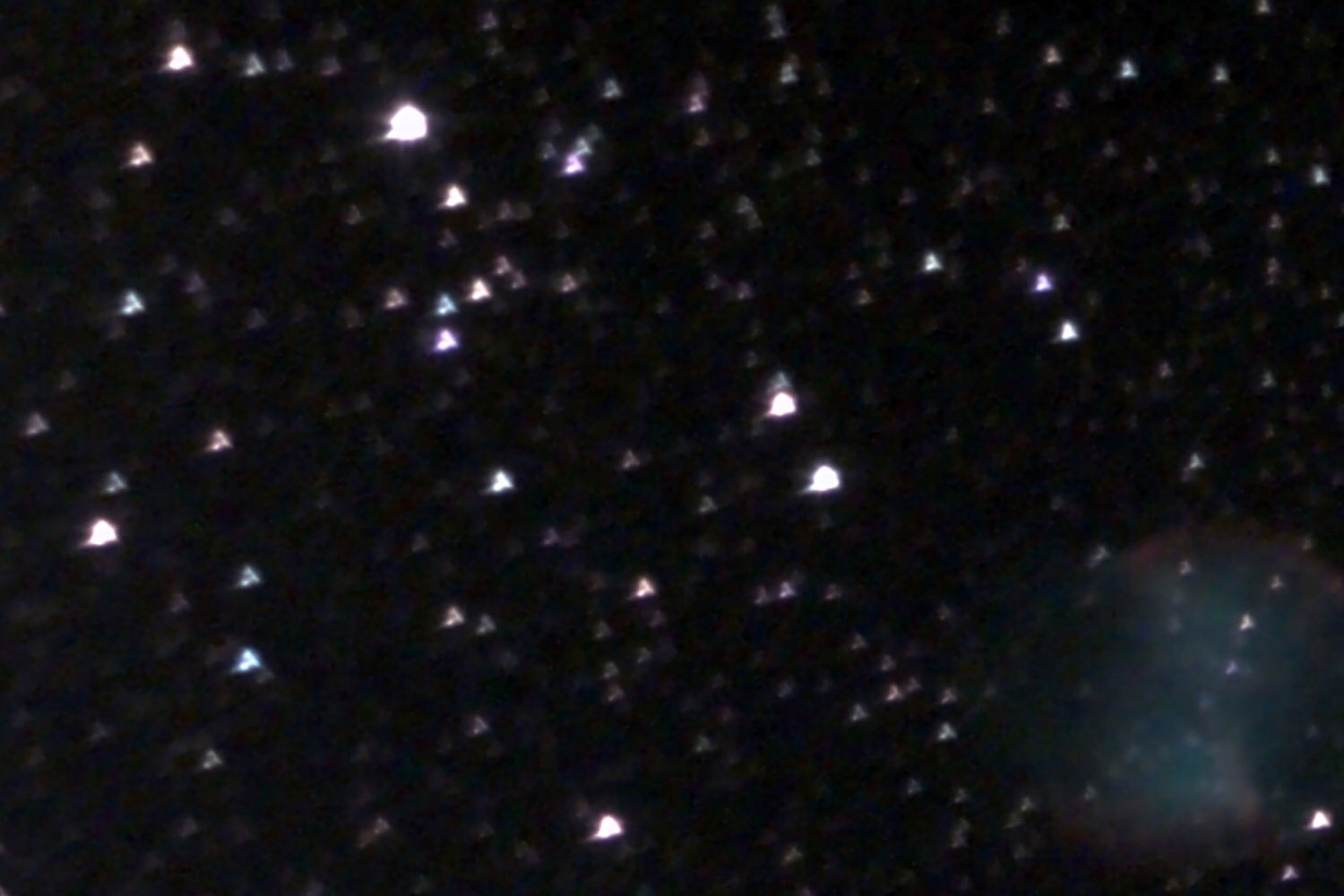 |
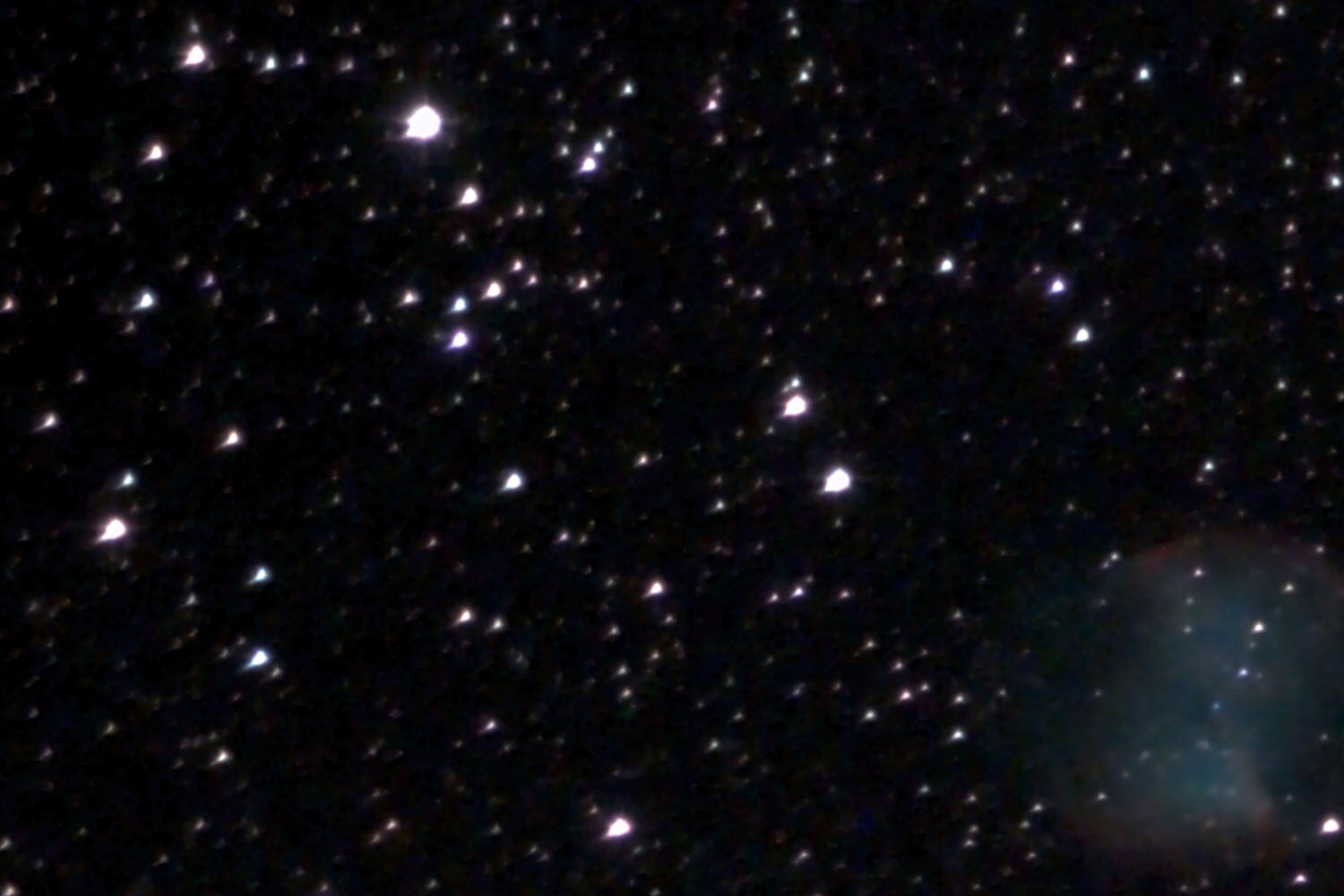 |
|
M 27 - eVscope 2, Dec 10, 2021, unprocessed (original size), after collimation attempts, section |
(4) M 27 - eVscope 2, Dec 10, 2021, unprocessed (original size), after collimation attempts, section |
Here are two further examples from January 21, 2022:
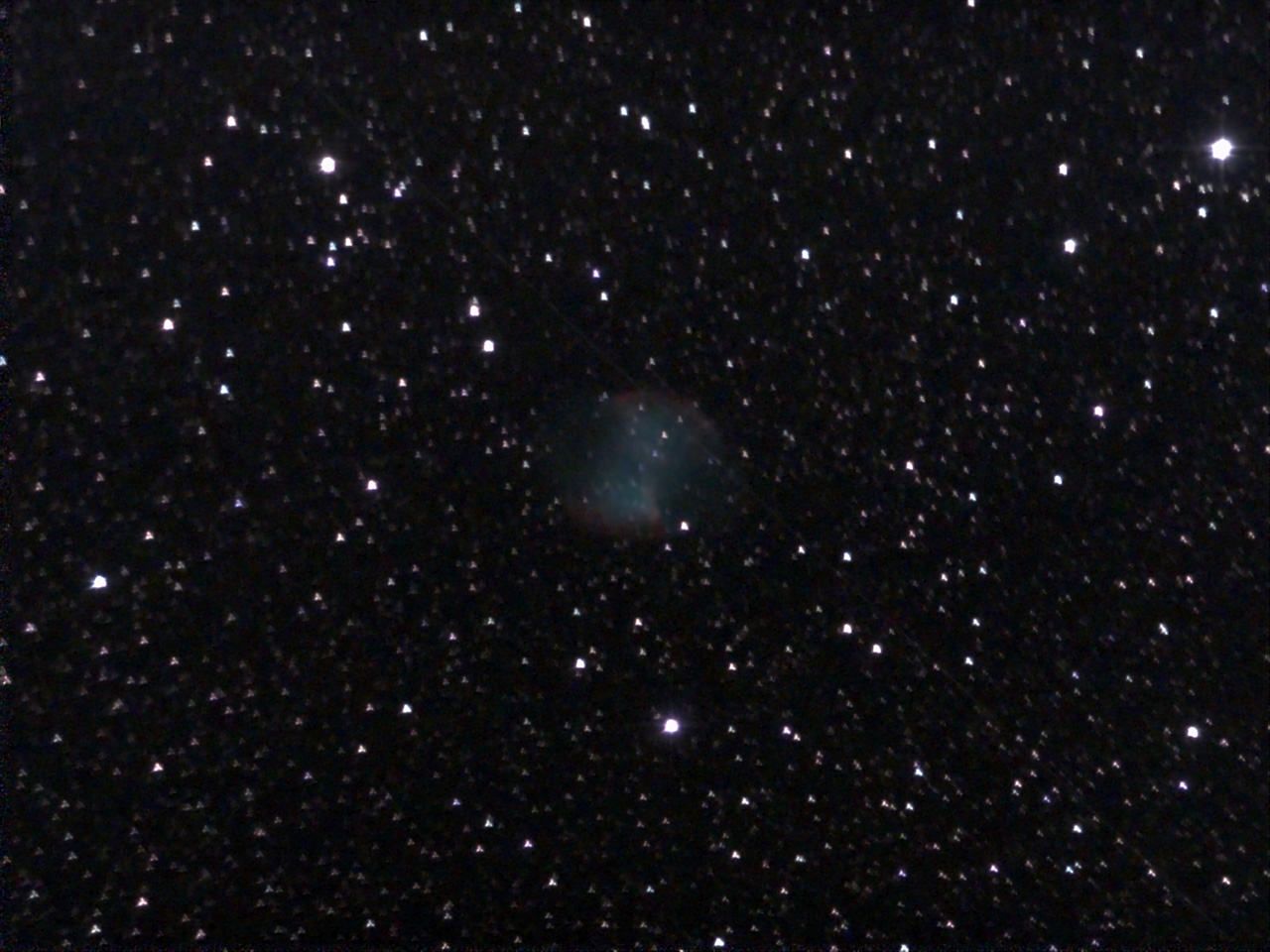 |
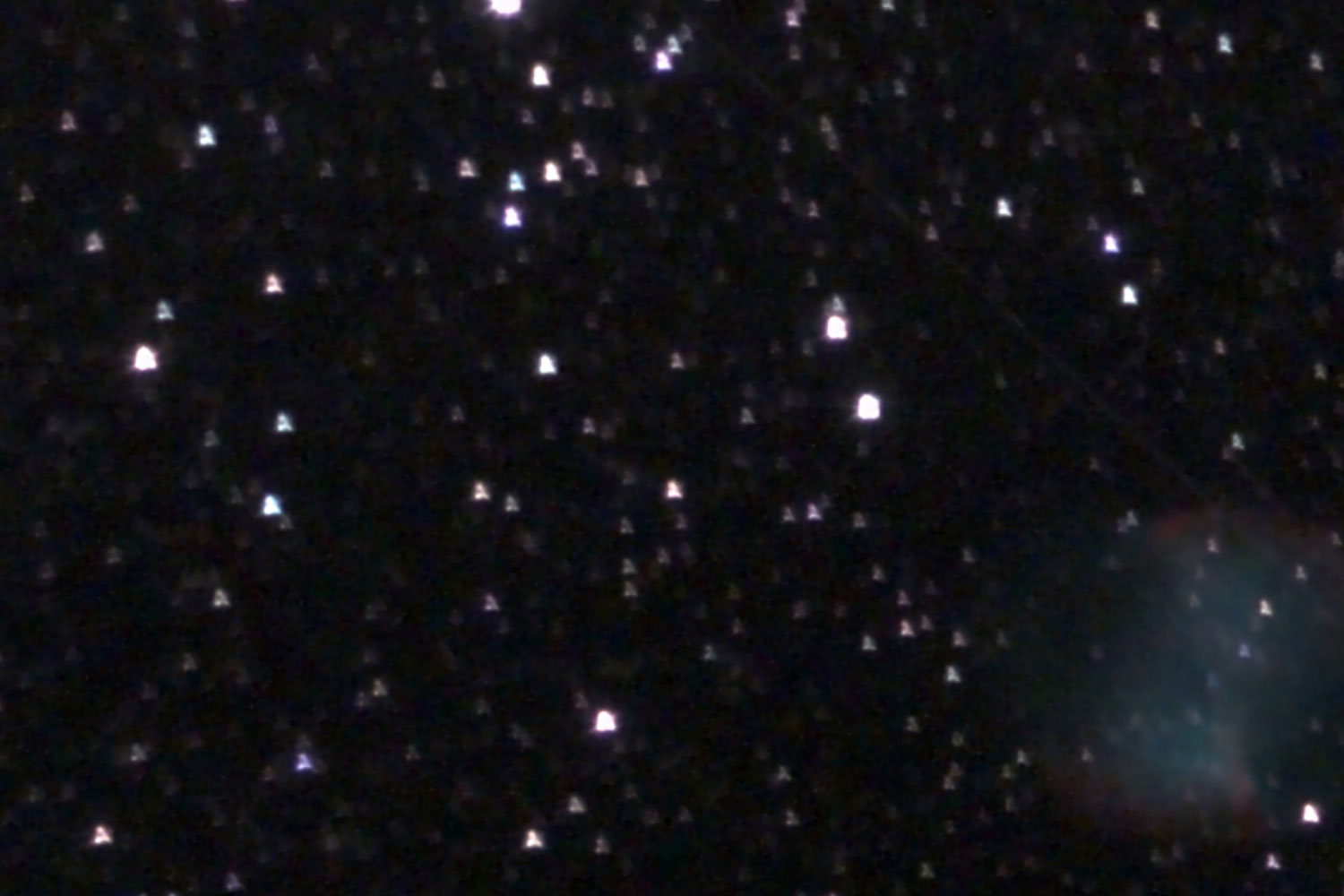 |
|
M 27 - eVscope 2, Dec 21, 2021, unprocessed (original size), after first collimation (made worse!) |
M 27 - eVscope 2, Dec 21, 2021, unprocessed (original size),after first collimation (made worse!), section |
|
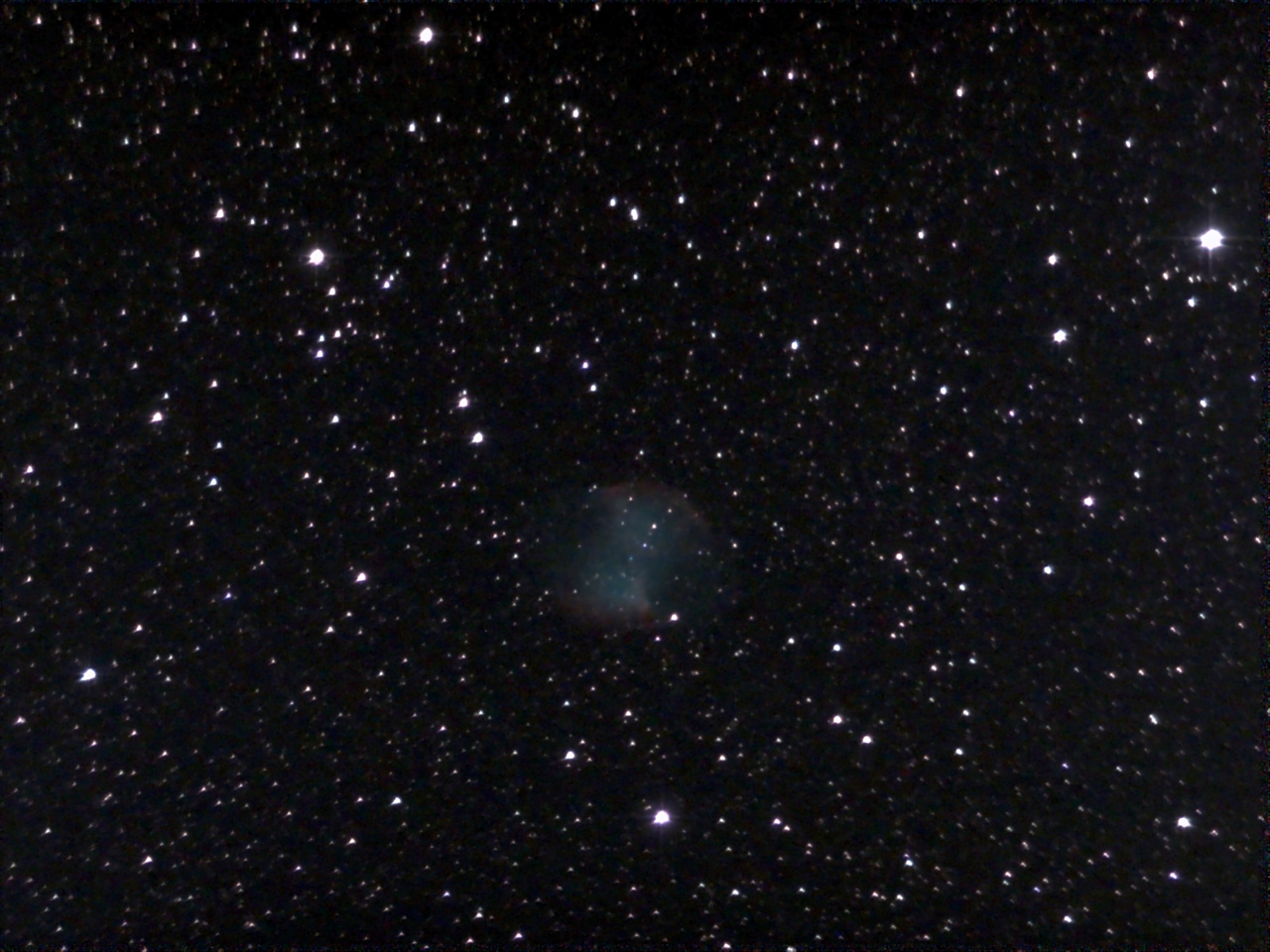 |
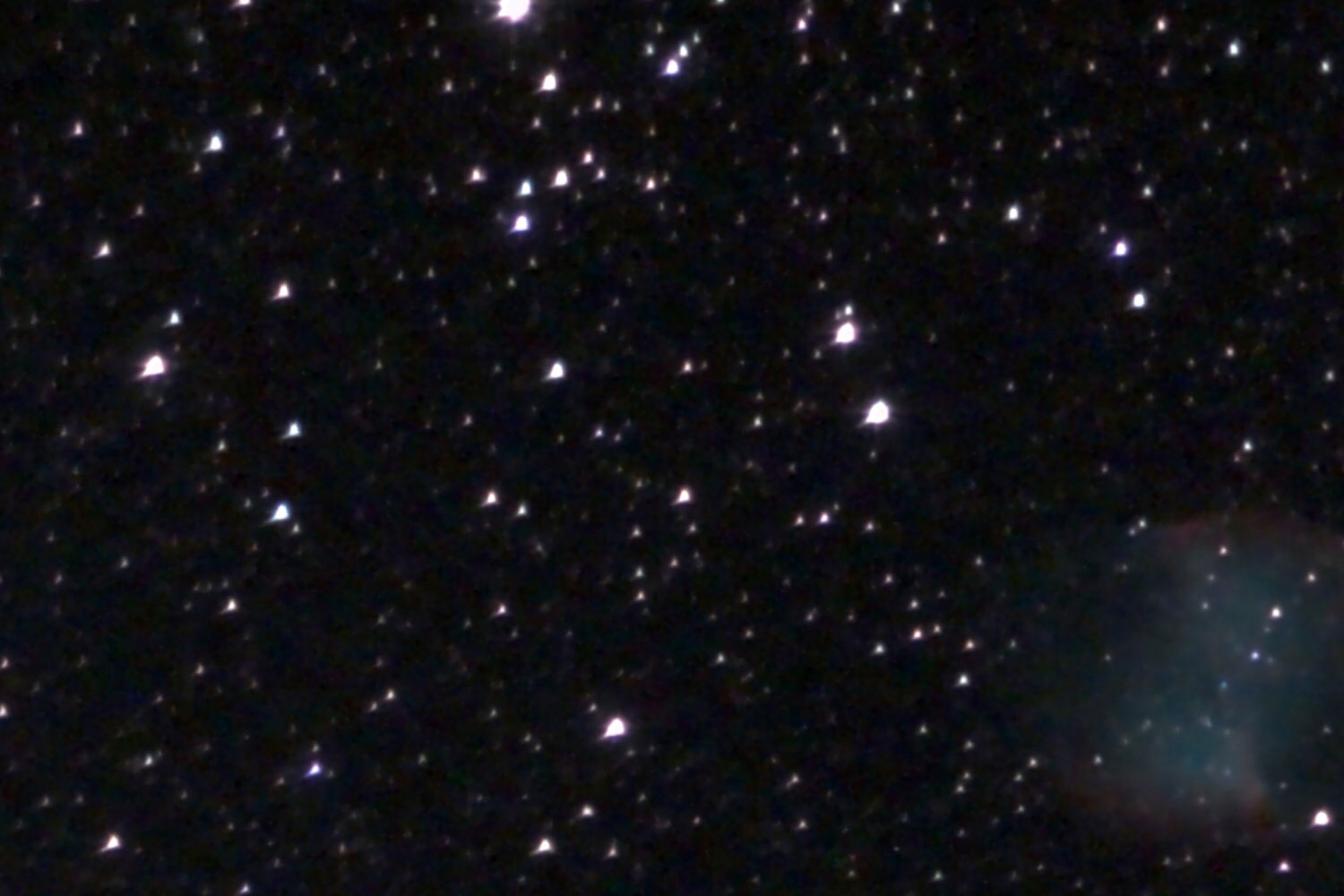 |
|
M 27 - eVscope 2, Dec 21, 2021, unprocessed (original size), after second collimation (improved) |
M 27 - eVscope 2, Dec 21, 2021, unprocessed (original size), after second collimation (improved), section |
Conclusion: Of course, collimation is of little use if the primary mirror is under tension. In this respect, my collimation attempts were largely in vain. I also suspect, because the collimation image was not too bad, that little was changed by the collimation itself. Rather, the differences between the photos are mainly due to changes in sharpness. As I was able to find out, the improvement of sharpness has a positive effect, but does not make triangular stars disappear when the primary mirror is under tension, but at most makes them smaller. In the following, I would like to investigate this a bit more systematically!
Star shapes at different sharpness
In the following, I demonstrate with the help of test images how star shapes change when changing the focus with the main mirror under tension.
In retrospect, it might have been enough to take fewer photos, but closer around the focus point, in order to document the change of star shapes especially in this region.
Note: If bright stars show "double spikes", the focus is not correct!
Coma
Reflecting telescopes show coma due to their design, which can be largely eliminated by coma correctors. With "fast" Newtons (f/4, f/5), the coma is particularly evident. All eVscopes have a focal ratio of f/4 and do not have a coma corrector. It remains an open question, which part of the image field the sensors cover. The more they cover up, the stronger the coma should be. The eVscope 2 uses a sensor with a 16:9 aspect ratio, but like the other models, only uses a 4:3 aspect ratio. This might be an indication that the coma would have been too strong further out for a meaningful use of the sensor.
Preliminary Final Words
Since I was not satisfied with the results of my new eVscope 2, Unistellar offered to check and possibly repair my eVscope 2. So, I sent it to Unistellar on February 14, 2022 and received information on February 18 that my eVscope 2 had been repaired and would be returned to me. When asked, I was told that there was a problem with the primary mirror, which was slightly under tension and therefore produced blurry images. As proof of the repair, I received a photo of Alnilam, which was taken with my eVscope 2 after the repair. It looks much better than my similar photo of Alnitak (near the Flame Nebula), but at a closer look still exhibits triangular stars:
In March 2022, I was able to take first photos with my repaired eVscope 2. Read pages First Experiences (After Repair - Part 1) and First Experiences (After Repair - Part 2) for more information!
So please note that my eVscope 2 photos on this page do not reflect the true performance of the eVscope 2!
Links
- Unistellar Website: unistellaroptics.com
- eVscope 2 product page: unistellaroptics.com/evscope2
- Unistellar eVscope 2 (thread started by P_E_T_E_R): forum.astronomie.de/threads/unistellar-evscope-2.313920 (in German)
- Hands on: Unistellar eVscope 2 (thread started by Kerste): www.astrotreff.de/forum/index.php?thread/268609-hands-on-unistellar-evscope-2/&postID=1576342#post1576342 (in German)
- Hands on: Unistellar eVscope 2 (Blog by Alexander Kerste): kerste.de/?p=13704 (in German)
- See also my page offering Astronomy Links.
| 16.12.2022 |
